Embark on an unforgettable journey with the top 52 places to visit in 2025. Whether it’s the Arctic beauty of Greenland, the historic charm of Assam, India, or East London’s vibrant arts scene, this year’s list offers something for everyone. From cultural celebrations in Jane Austen’s England to eco-conscious routes in Sicily, explore the world’s most captivating destinations.
1. Jane Austen’s England
A Literary Pilgrimage Through a Pastoral Setting
This year marks 250 years since Jane Austen’s birth, inviting fans to explore England’s southwest. Austen’s birthplace, Hampshire, served as both home and inspiration for her writing. Visitors can start at Jane Austen’s House, which hosts exhibitions and themed events. July will bring the Jane Austen Country Fair to Steventon, while Southampton features her writing desk and the playful show Pride and Prejudice (Sort Of). In Winchester, activities include literary tours, readings, and a new statue at Winchester Cathedral, where Austen is buried. Bath’s Jane Austen Center celebrates with regency-themed events, including dance balls and a costumed promenade. Austen film adaptation sites, such as Stourhead in Wiltshire, add further charm.
2. Galápagos Islands, Ecuador
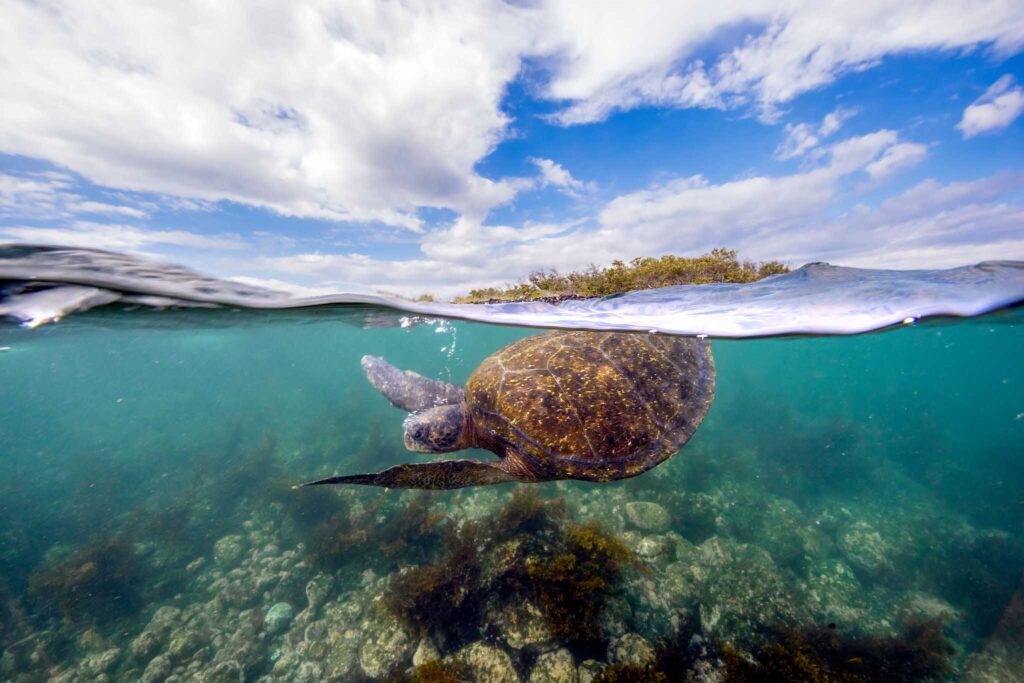
A Price Hike for a Worthy Cause
Entry fees to Galápagos National Park recently doubled to $200 for most foreign visitors over 12. This is the first increase in 26 years and will fund vital conservation efforts for the islands’ fragile ecosystem, home to unique species like the giant tortoise and Galápagos penguin. Revenue will also improve waste management and medical facilities. Matt Kareus, director of the International Galápagos Tour Operators Association, notes land-based tourism’s unsustainable growth since the 1990s and calls the increase a positive step for the archipelago’s preservation.

3. New York City Museums
Expanded Spaces for Artistic Exploration
As New York celebrates its 400th anniversary, art lovers can enjoy four major museum reopenings. The Frick Collection unveils restored spaces and new galleries in April, followed by the Metropolitan Museum of Art’s revamped Michael C. Rockefeller Wing in May, showcasing over 1,800 pieces from Africa, Oceania, and the ancient Americas. The New Museum’s new 60,000-square-foot extension will double its exhibition space, while the Studio Museum in Harlem, reopening this fall, showcases an extensive collection by Black artists.
4. Assam, India

Uncover Ancient History in Northeast India
The UNESCO-inscribed Charaideo Moidams, ancient burial mounds from the Ahom dynasty, spotlight Assam’s rich heritage. Visitors can also explore tea gardens and Kaziranga National Park, home to the endangered one-horned rhinoceros. Improved infrastructure, including expanded airport facilities in Guwahati, enhances accessibility to this unique region near Myanmar and Bangladesh.
5. Thailand
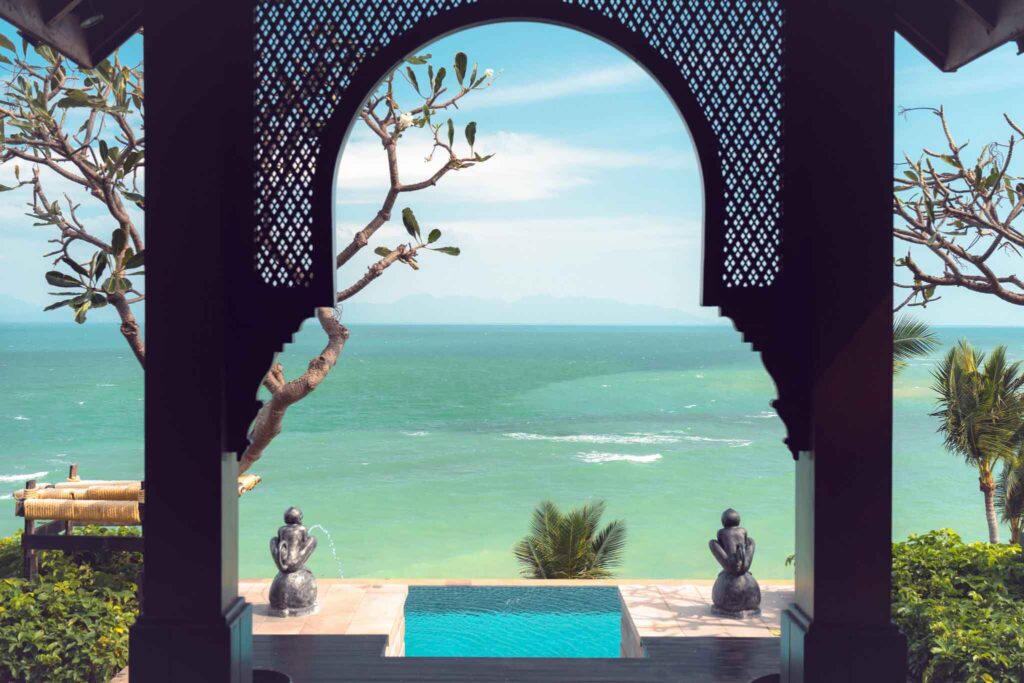
‘The White Lotus’ Inspires Koh Samui Tourism
Thailand’s stunning beaches and vibrant culture take center stage in the latest season of The White Lotus, filmed largely on Koh Samui. The country’s efforts to attract 40 million tourists by 2025 include expanded visa-free entry for citizens of 90+ countries and improved flight options.
6. Greenland
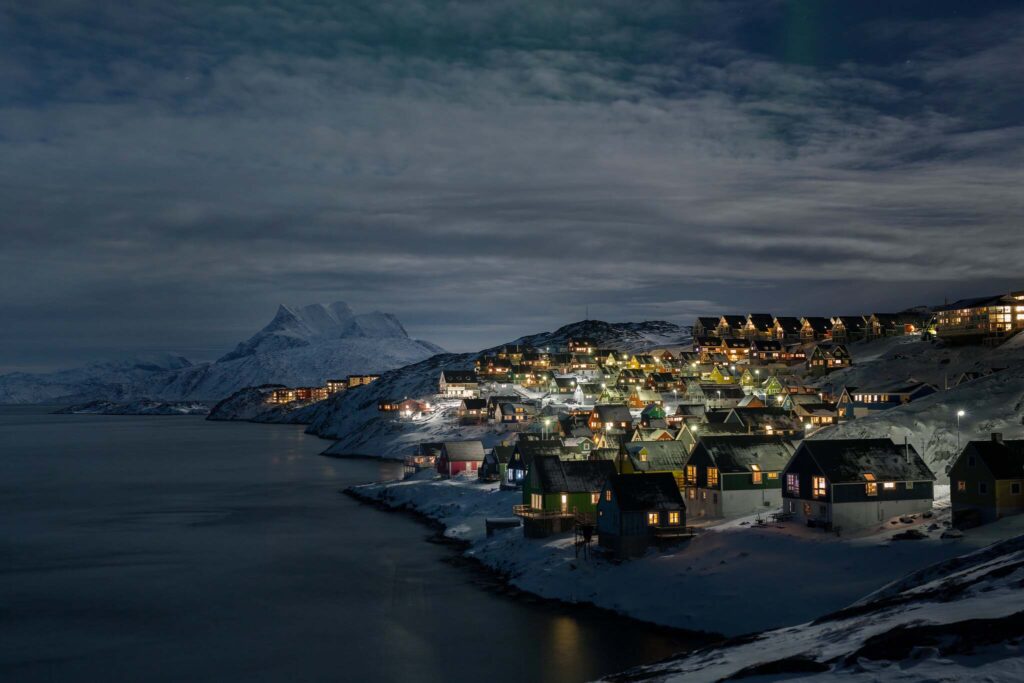
A New Gateway to Arctic Adventures
Greenland welcomes visitors with the opening of Nuuk’s new international airport. Seasonal flights from Newark, offered by United Airlines starting in June, make the Arctic wilderness more accessible. Winter itineraries include dog sledding and igloo stays, while the summer offers endless daylight. Greenland is taking steps to avoid overtourism, inspired by Iceland’s example.
7. Aix-en-Provence, France

Celebrate Cézanne in the Heart of Provence
Aix-en-Provence honors Paul Cézanne with the reopening of his family estate, Jas de Bouffan, after renovations. Visitors can explore Les Lauves studio and the Bibémus quarries, alongside Musée Granet’s major exhibition featuring over 100 of Cézanne’s works.
8. Sun Valley, Idaho
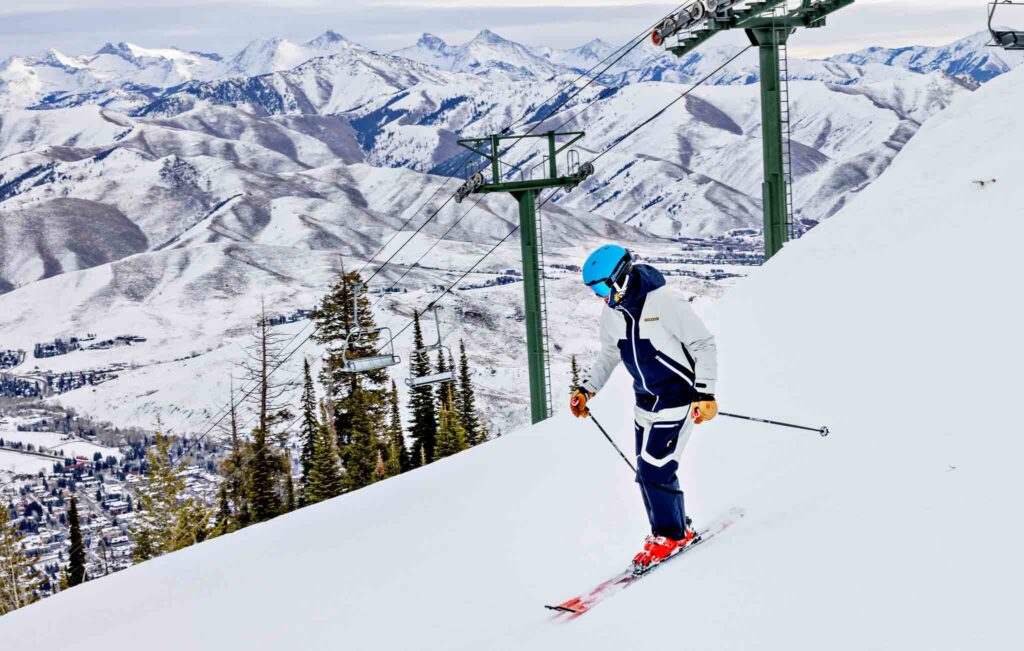
Ski and Celebrate at the Alpine Finals
Sun Valley hosts the Audi FIS Ski World Cup Finals this March, attracting top skiers to Bald Mountain. Alongside the races, visitors can enjoy live music, parties, and local festivities during the 5850 Fest.
9. Lumbini, Nepal

A Modern Revival of a Buddhist Pilgrimage Site
The ancient birthplace of Buddha in Lumbini welcomes new attractions, including the Thousand Buddha Temple and the India International Center for Buddhist Culture and Heritage. Renovations on the Ramagrama Stupa, guided by Italian architect Stefano Boeri, are set to begin this year.
10. Sydney, Australia
A Modern Update to an Oceanside Icon
Sydney’s Fish Market is set for a futuristic upgrade, doubling visitor capacity. The city’s metro expansion, new luxury hotel renovations, and culinary offerings enhance Sydney’s appeal as a coastal hub for culture and cuisine.
11. Coimbra, Portugal
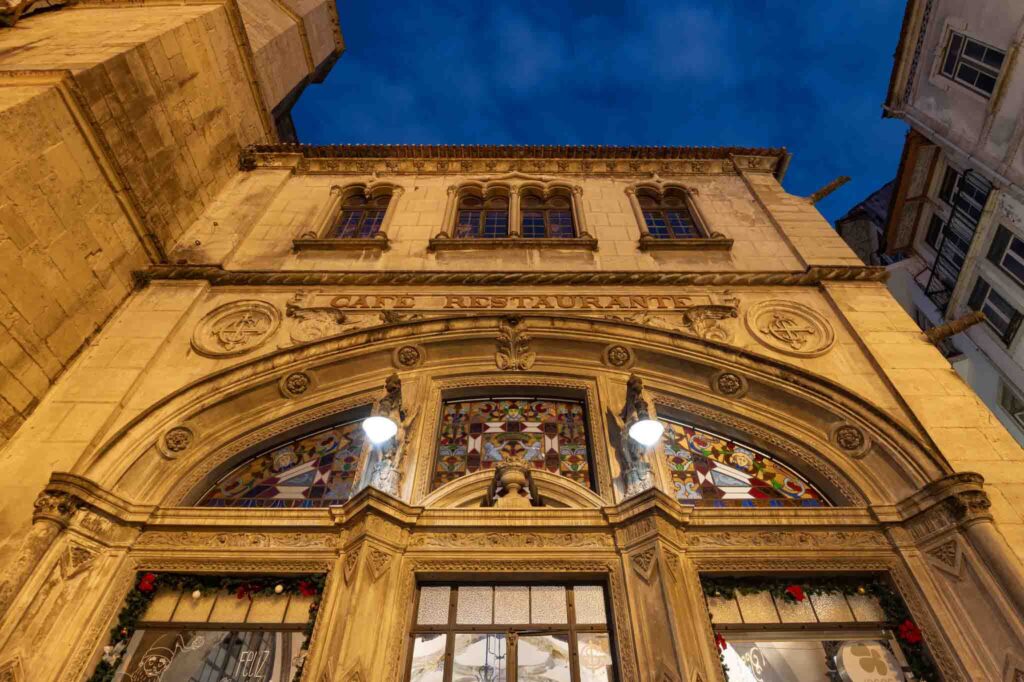
Tradition Meets Modern Cool in a Historic Town
While Lisbon and Porto draw the crowds, Coimbra, a medieval gem on the Mondego River, remains tranquil and steeped in tradition. University students in black capes sip espresso and enjoy pastries at Café Santa Cruz, serenading with fado and 12-string guitars. Yet Coimbra has a fresh energy: Coola Boola CoLAB offers retro shopping, tattoos, and vegetarian meals, while Alto Canto, a boutique hotel, boasts a romantic ambiance and stunning terrace views. Nearby, the Malcata Eco Experience provides forest wellness activities, and the new Aristides de Sousa Mendes Museum in Cabanas de Viriato honors the consul who saved thousands of Jews during WWII.
12. Angola
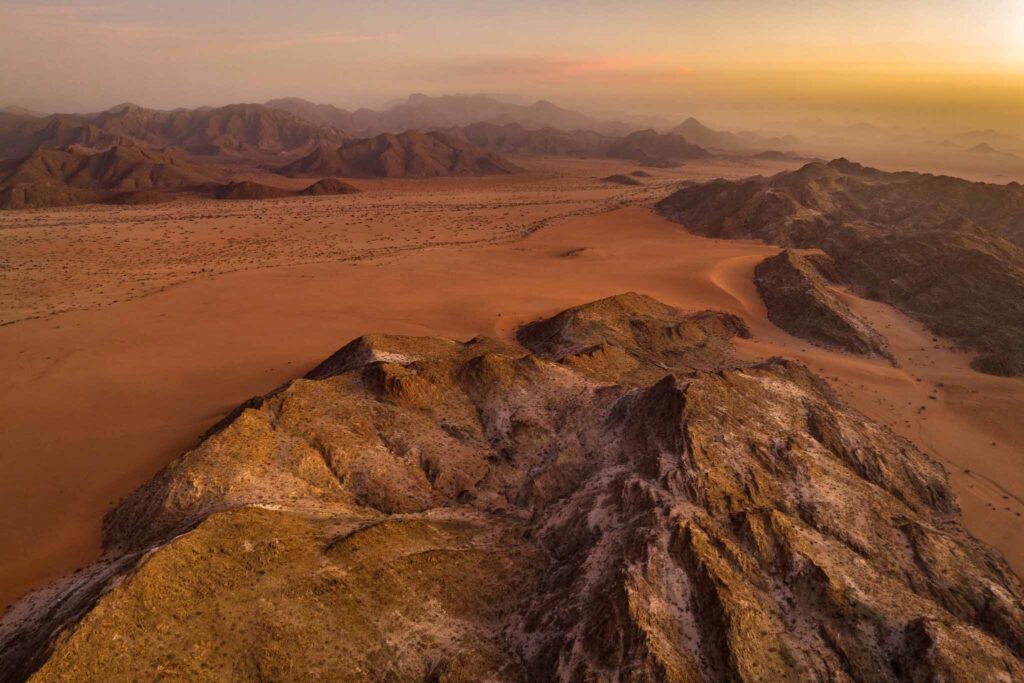
A New Frontier for Conservation and Adventure
Angola’s pristine beaches, sacred waterfalls like Kalandula, and diverse national parks, including Iona in the Namib Desert, are ripe for exploration. The Kavango-Zambezi Transfrontier Conservation Area, spanning five countries, now requires only one visa for entry. U.S. travelers enjoy 30-day visa-free access, and a new airport in Luanda enhances connectivity. Explore Luanda’s art scene, stay at the new Protea by Marriott, or venture off the beaten path with Okuya Adventures. Options include the 15-day Rovos Rail expedition or surfing along Cabo Ledo’s secret beaches.
13. Hamburg, Germany

Innovation in Architecture and Digital Art
Hamburg, known for its architectural gems, debuts the renovated St. Pauli Bunker, a WWII relic transformed into a cultural hub with rooftop gardens, a hotel, and memorials. The teamLab Borderless Hamburg, Europe’s largest digital art museum, will open with immersive exhibits, and the Conrad Hamburg hotel, housed in a historic shopping arcade, launches in August.
14. Nicaragua
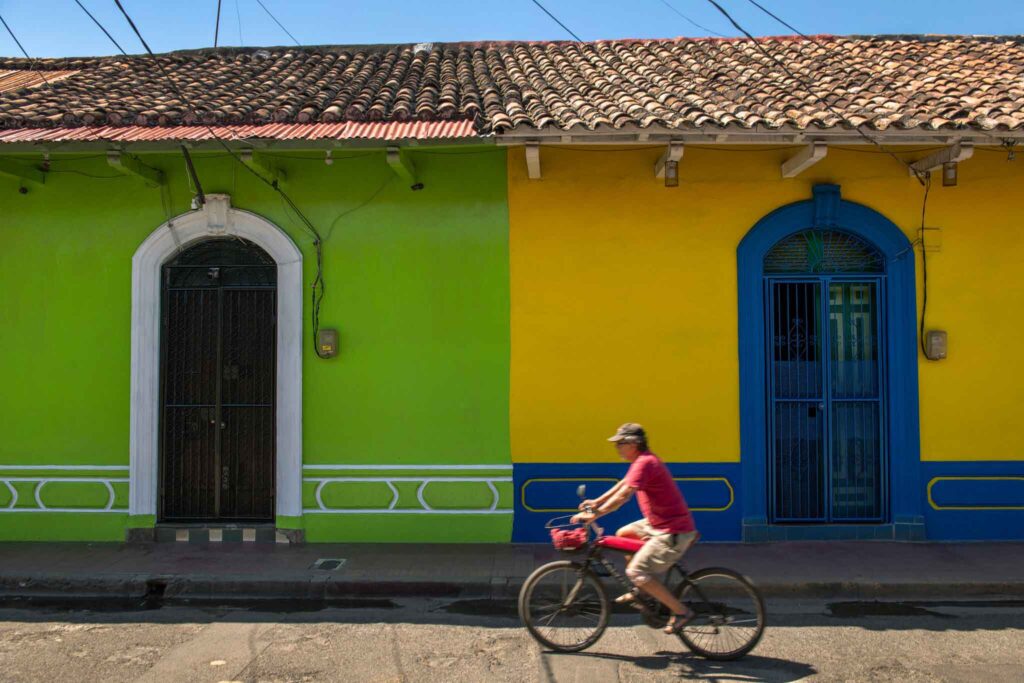
Emerging Eco-Paradise with Coastal Connectivity
Nicaragua, with its colonial towns, lush jungles, and Caribbean islands, is unveiling the Costanera highway, connecting over 50 beaches along the Pacific’s Emerald Coast. Nonstop flights from the U.S. to Managua make exploration easier. Stay at eco-friendly Rancho Santana or the chic Hide and Seek Resort, offering surf retreats and turtle sanctuaries.
15. Dolomite Mountains, Italy

Sustainable Hiking in Remote Alpine Beauty
The new Cammino Retico trail offers a 105-mile circuit through Northern Italy’s Dolomites, linking historic sites, Alpine lakes, and villages like Feltre. Designed for eco-conscious travelers, the trail features stampable passports and plans for perks. A cycling route will debut soon, complementing the hiking experience.
16. Asheville, N.C.

A Resilient Return to the Blue Ridge Mountains
After Hurricane Helene’s devastating floods, Asheville invites visitors to rediscover its charm. The River Arts District and Biltmore Village have rebounded, with reopened studios and eateries like Good Hot Fish. The renovated YMI Cultural Center and vibrant murals celebrate Asheville’s cultural heritage.
17. Magdalena River, Colombia
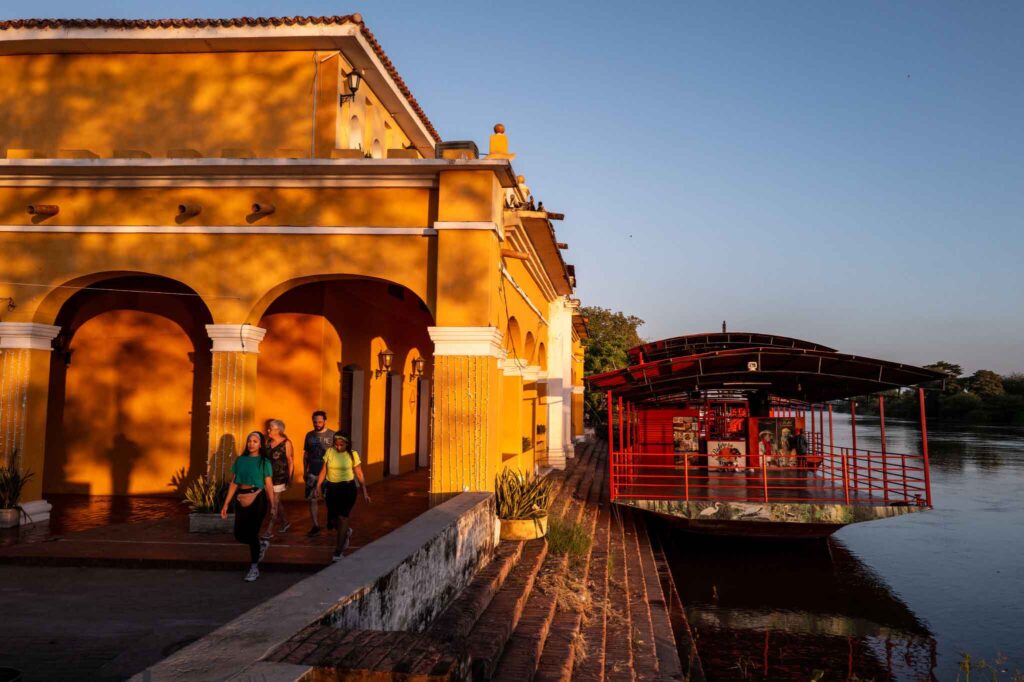
Luxury Cruising Through Colombia’s Heart
Two new AmaWaterways luxury vessels will navigate the Magdalena River, offering immersive weeklong journeys between Cartagena and Barranquilla. Stops include UNESCO-listed Mompox, Afro-Caribbean San Basilio de Palenque, and stilted Nueva Venecia, showcasing local culture, music, and wildlife like manatees and caimans.
18. Los Cabos, Mexico

A Luxe Evolution on Baja’s Beaches
Los Cabos unveils a new wave of upscale accommodations, including Amanvari, Park Hyatt Los Cabos, and St. Regis Los Cabos. These resorts offer high-end amenities like butler service, wellness centers, and world-class golf. Michelin-starred dining enhances this beloved destination’s refined appeal.
19. Alishan, Taiwan
Rediscover Mountain Tranquility on a Restored Railway
The reopened Alishan Forest Railway invites travelers to traverse Taiwan’s lush mountain ranges on a scenic 44-mile route. Stops like Fenqihu, known for bento boxes and local delicacies, enrich the five-hour journey. Visit during the dry season from November to April for the best experience.
20. Flow Country, Scotland
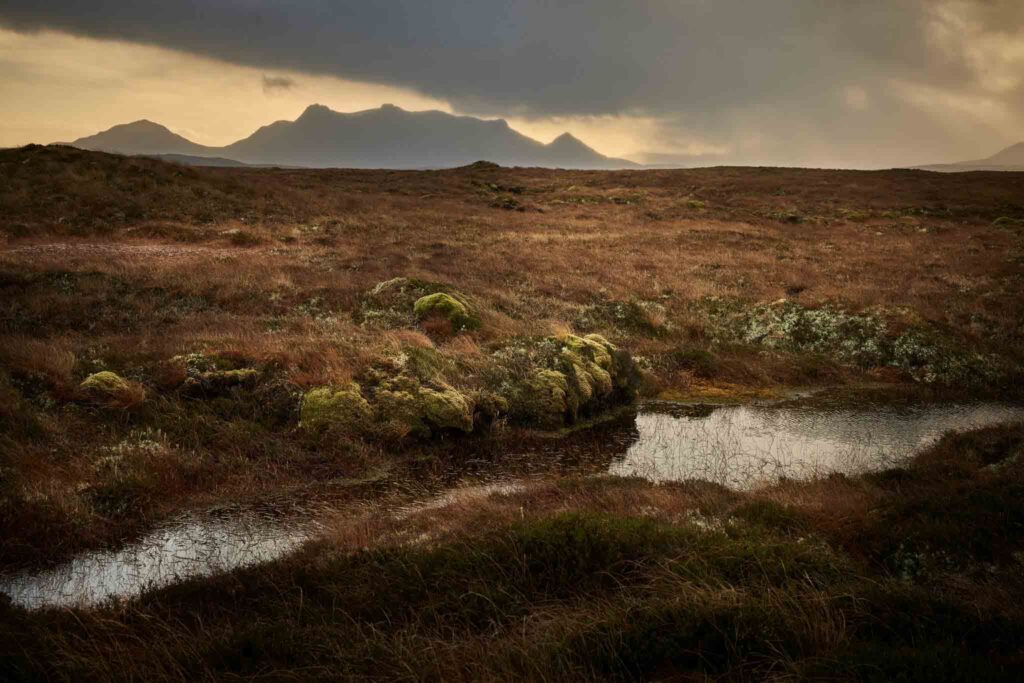
Explore the World’s First UNESCO Peatland
Scotland’s Flow Country, a vast peatland and major carbon store, gained UNESCO World Heritage status. Visitors can hike or cycle rugged trails, explore museums detailing human history, and marvel at its wildlife. Embrace the remoteness and ecological significance of this untamed landscape.
21. Kristiansand, Norway

A Coastal Gem Becomes a Cultural Hotspot
Kristiansand, nestled along southern Norway’s coastline, combines tradition with modern cultural appeal. The city features a charming old town of white wooden houses, a bustling harbor, and beautiful beaches. The Kunstsilo Museum, a repurposed 1935 grain silo, showcases over 5,000 Nordic modernist artworks from the Tangen Collection. Visitors can enjoy exhibitions like “Time” by photographer Mette Tronvoll, interactive digital displays, concerts, and workshops. The museum’s rooftop Panorama bar offers stunning fjord views. Nearby, Odderøya Island blends arts and nature with galleries, cafes, hiking trails, and the wave-like Kilden Performing Arts Center.
22. Bukhara, Uzbekistan

A Silk Road City Shines with Contemporary Art
This ancient UNESCO World Heritage city will host its inaugural Bukhara Biennial from Sept. 5 to Nov. 20, showcasing global artists like Antony Gormley and Laila Gohar. Set in the restored historic district, the event highlights caravanserai and Islamic architecture. The city is now easier to explore with the addition of two new airlines, Silk Avia and Air Samarkand, launched last year.
23. Lexington and Concord, Massachusetts
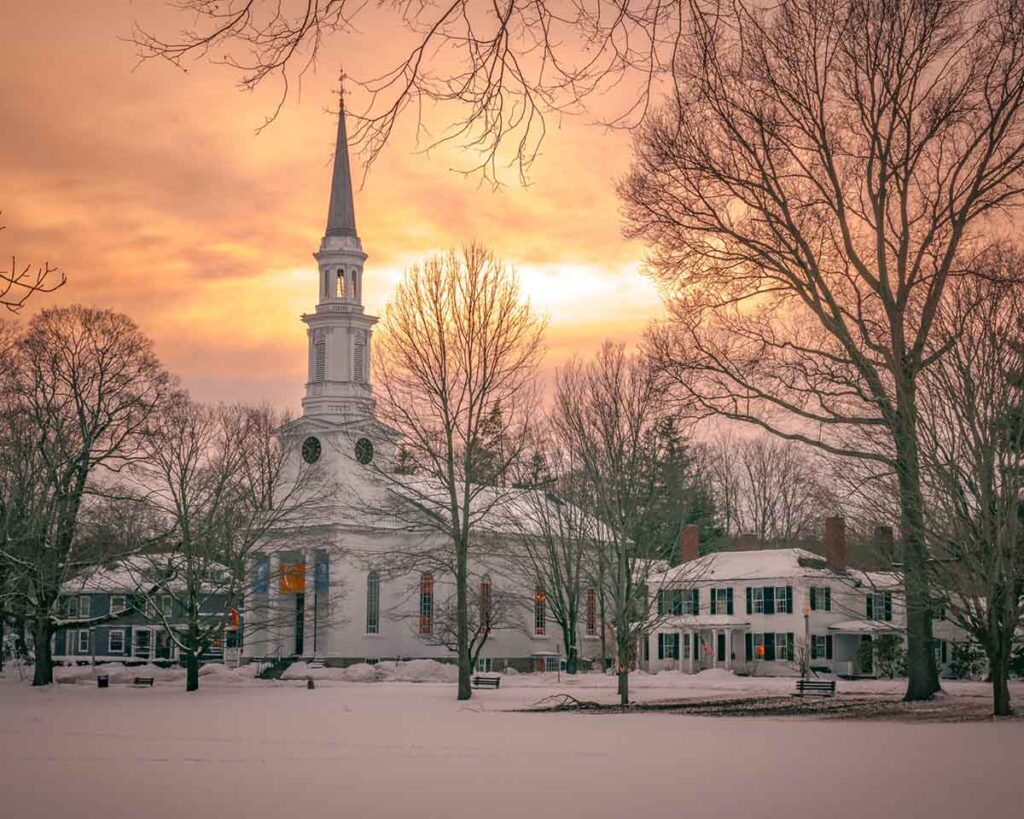
Honoring the Start of the American Revolution
As the 250th anniversary of the Declaration of Independence approaches, Lexington and Concord commemorate the first Revolutionary War battles of April 19, 1775. Events include parades, reenactments, tree plantings, and art installations. Highlights include the Lexington Depot Museum, a new bronze monument celebrating female pioneers, and tours exploring the roles of Indigenous and Black communities during the revolution.
24. Canfranc, Spain
A Hidden Railway Station Transformed
Nestled in the Pyrenees, Canfranc’s International Railway Station, once a WWII espionage hub, has been reborn as a five-star hotel with a Michelin-starred restaurant. Visitors can reach it via the newly reopened Zaragoza-Canfranc rail line, which offers a scenic, tunnel-filled journey. Outdoor activities include hiking, skiing, and exploring glacial lakes.
25. Benin City, Nigeria
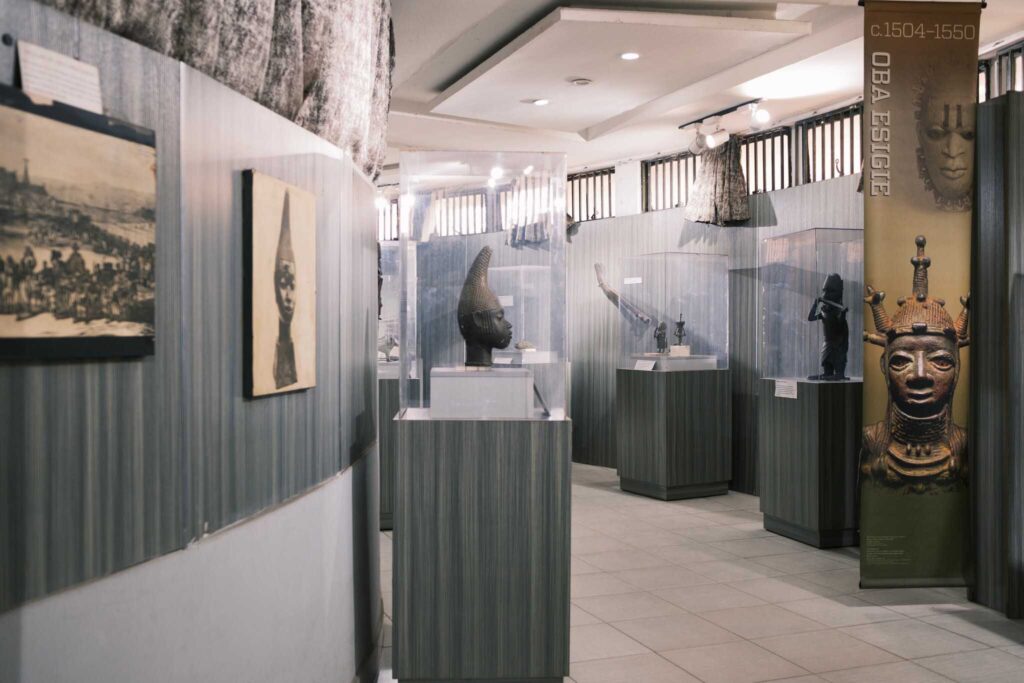
Traditional Art in a Modern Setting
Benin City’s Museum of West African Art, designed by David Adjaye, showcases ancient terra-cottas, bronzes, and musical instruments. The museum’s eco-friendly design incorporates traditional materials and replanted rainforest flora. It complements Benin’s vibrant cultural scene, which includes the National Museum and artisan workshops.
26. Amsterdam
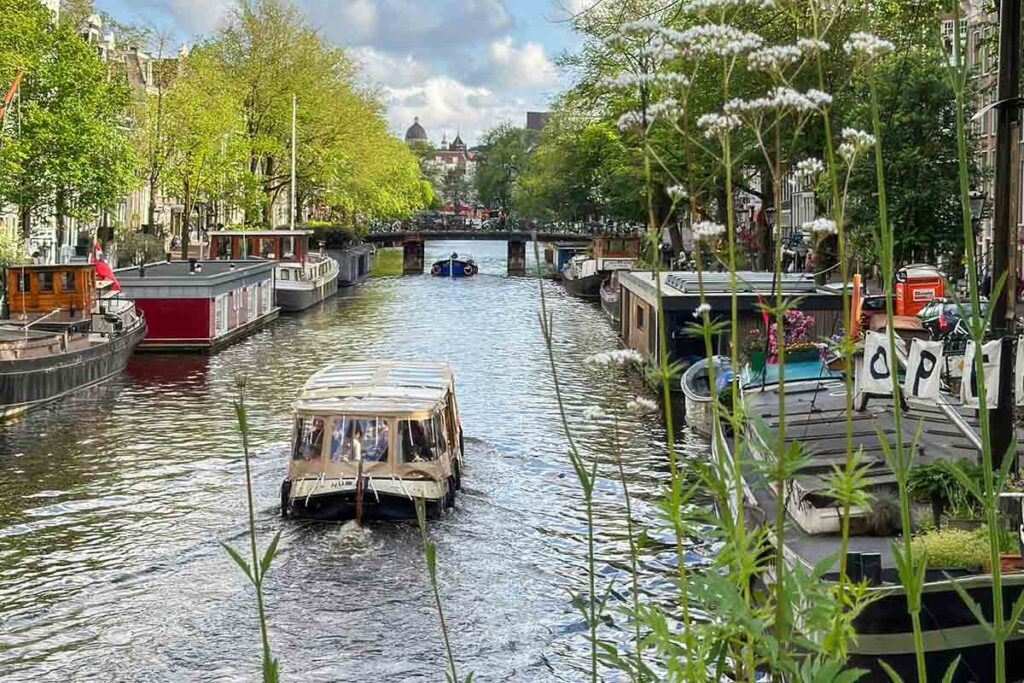
A 750th Birthday Celebration Across the City
Amsterdam celebrates its 750th birthday with events like the Amsterdam Expo, a citywide street party on June 21, and the five-day SAIL 2025 festival in August. The Suriname Museum and Drift Museum, debuting this year, add to the festivities, along with the 50th anniversary Amsterdam Marathon in October.
27. New Orleans, Louisiana

Fresh Starts in the Big Easy
New Orleans unveils updates like Amtrak’s restored Sunset Limited train service and the Superdome’s renovation ahead of hosting its 11th Super Bowl. The city’s food scene remains vibrant, with standout spots like Dakar NOLA blending Senegalese and Creole flavors and Étoile offering French-inspired local cuisine.
28. Raja Ampat, Indonesia
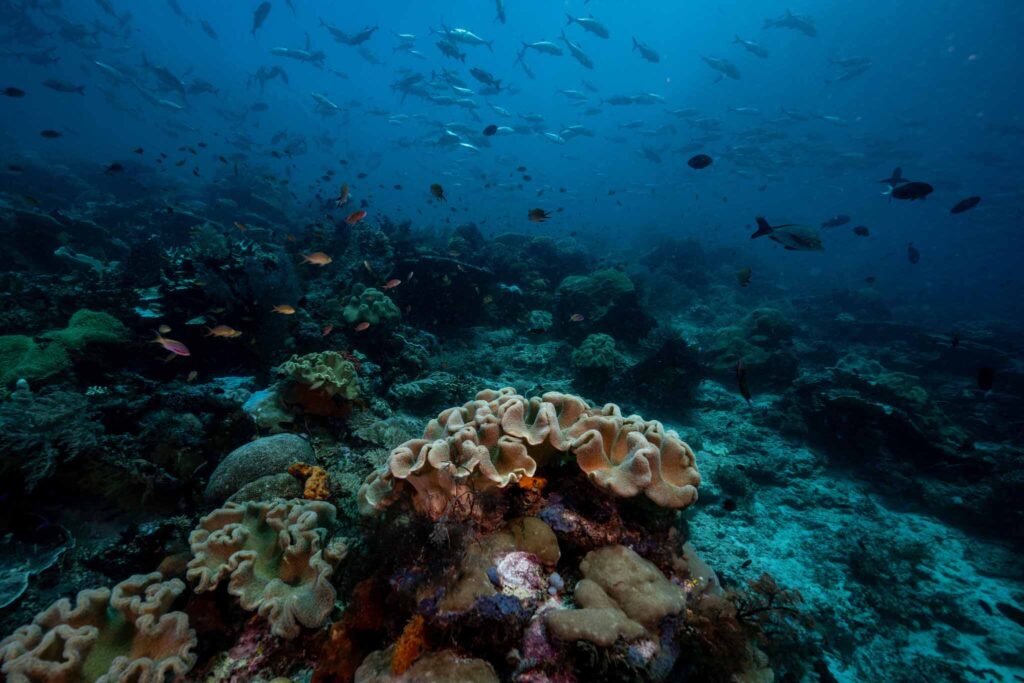
A Marine Paradise and Conservation Success
Raja Ampat, home to the Coral Triangle, offers world-class snorkeling, rare wildlife like Wilson’s bird of paradise, and thriving reef manta ray populations. Travelers can stay in eco-friendly overwater bungalows through local initiatives like the Raja Ampat Homestay Association or join curated tours by Abercrombie & Kent.
29. Delphi, Greece
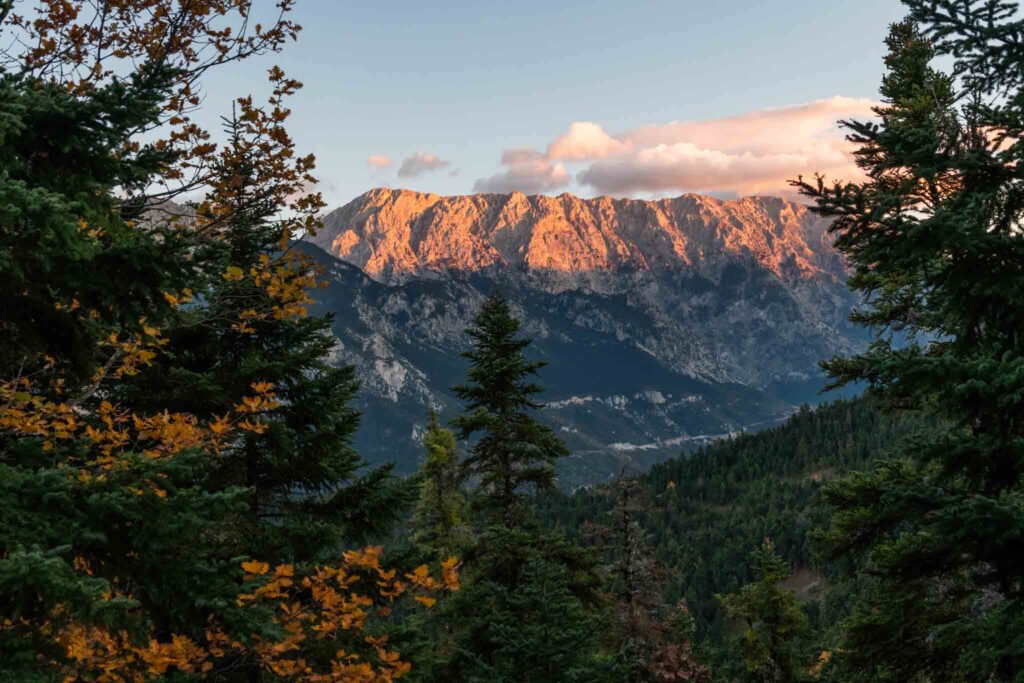
Explore Greece’s Hidden Highlands
The Pindus Trail, a new 500-mile route through Greece’s mountains, offers an alternative to popular destinations. Starting in Delphi, visitors can hike through cedar forests, ancient monasteries, and rustic villages. The trail highlights Greece’s highland culture and aims to revive its mountain communities.
30. Toyama, Japan
Art, Festivals, and Cuisine in an Alpine Gateway
Toyama, flanked by the Japanese Alps and the Sea of Japan, invites visitors with attractions like the Glass Art Museum and the lantern-lit Owara Kaze no Bon festival. Culinary highlights include Alpes for French bistro fare, Suzukeema for seasonal Japanese curries, and the jazz bar Hanamizuki-no-heya. The region is also recovering from natural disasters, offering a mix of resilience and tradition.
31. French Basque Country
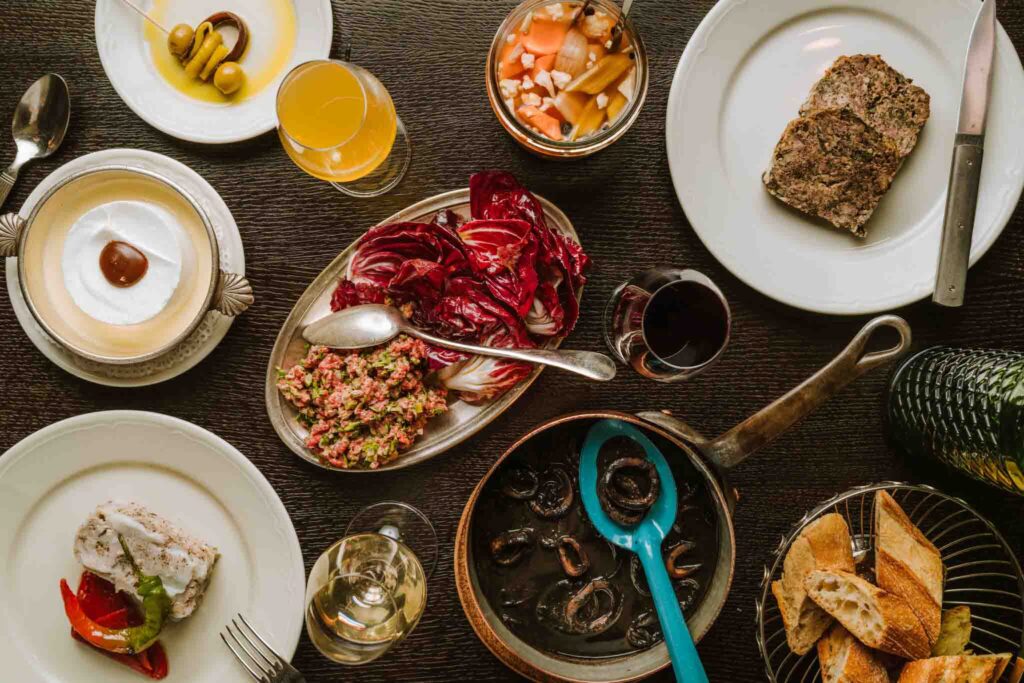
A Coastal Culinary Haven on the Rise
The French Basque Country, nestled between the Bay of Biscay and the Pyrenees, has become a top culinary destination thanks to an influx of innovative chefs. In St.-Jean-de-Luz, Iñaki Aizpitarte has transformed Petit Grill Basque, modernizing a local favorite. In Biarritz, Gregory Marchand brought his renowned Paris bistro to the newly revamped Regina Experimental Hotel. Highlights also include Pluviôse, a seafood bar with just 12 seats, and Lurrak in Arbonne. The region’s appeal extends beyond cuisine, with the Champ Lacombe art gallery in Biarritz, the charming Casaviel guesthouse, and Sugaar, a distillery producing Basque gin and whiskey.
32. Kilifi, Kenya
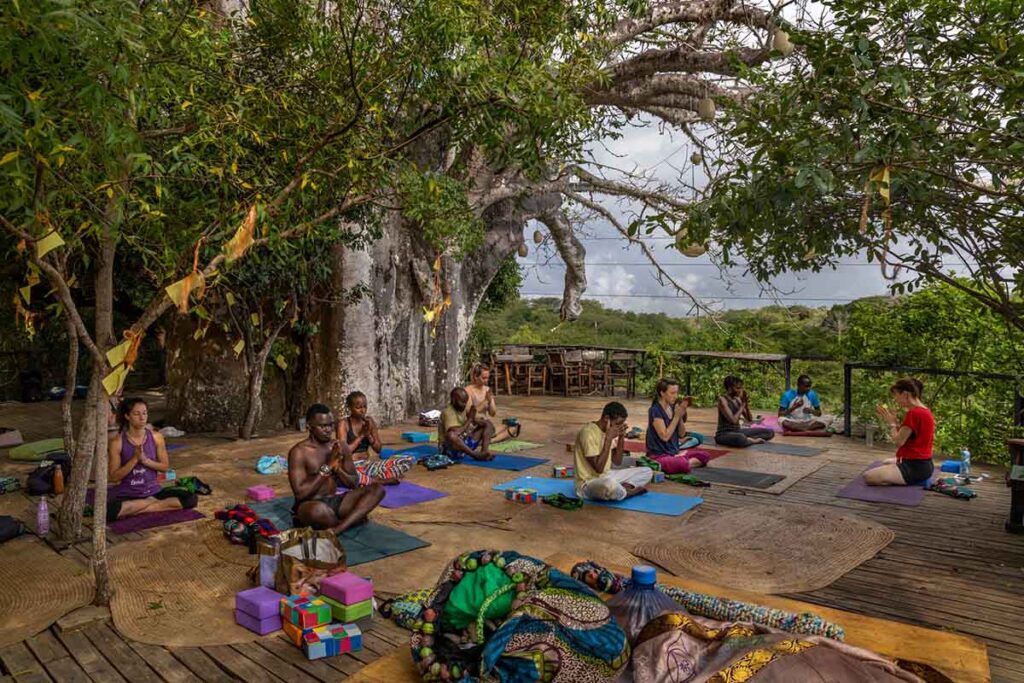
A Laid-Back Beach Escape with Artistic Vibes
Kilifi, once a quiet coastal village, has emerged as a hip destination on Kenya’s palm-lined shores. Known for its Beneath the Baobabs music festival, which combines Afro house and traditional African sounds, the town also hosts an October wellness festival. Kilifi’s vibrant community, enriched by musicians, artists, and digital nomads, thrives without sprawling resorts. Visitors enjoy kite surfing at Salty’s beach bar, dining on seared tuna at Twisted Fig, and experiencing cultural events at the Food Movement.
33. British Virgin Islands
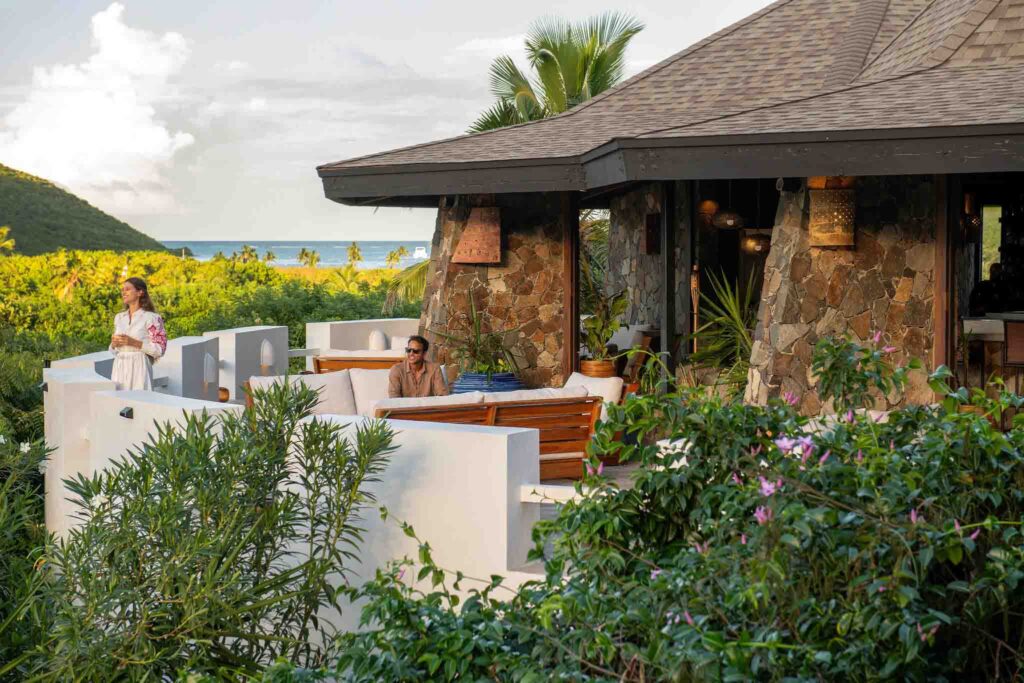
A Caribbean Jewel Reimagined
After years of rebuilding post-Hurricanes Irma and Maria, the British Virgin Islands are making a strong comeback. The iconic Bitter End Yacht Club now features timber-clad overwater bungalows, while the reimagined Biras Marina & Resort offers ocean-view terraces and fine dining. The restored Peter Island Resort boasts beachfront villas, a yacht club, and a luxury spa. Travel has also become more convenient with American Airlines’ nonstop flights from Miami to Beef Island.
34. Lofoten Islands, Norway
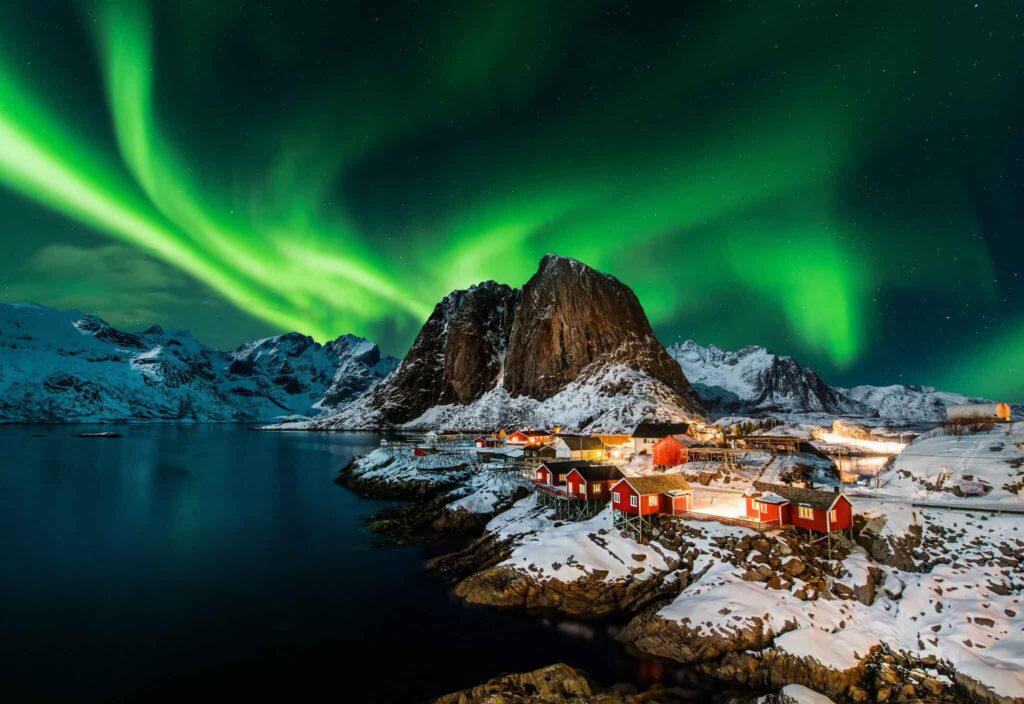
Year-Round Adventure and Aurora Chasing
The Lofoten Islands, above the Arctic Circle, offer dramatic landscapes and opportunities to view the northern lights during the solar maximum. Winter visitors can enjoy cozy Christmas markets and ski routes leading to fishing villages, while summer brings hiking, kayaking, and even surfing. Lofoten aims to become Norway’s most climate-friendly destination with reduced aviation emissions and enhanced public transit.
35. East London, England
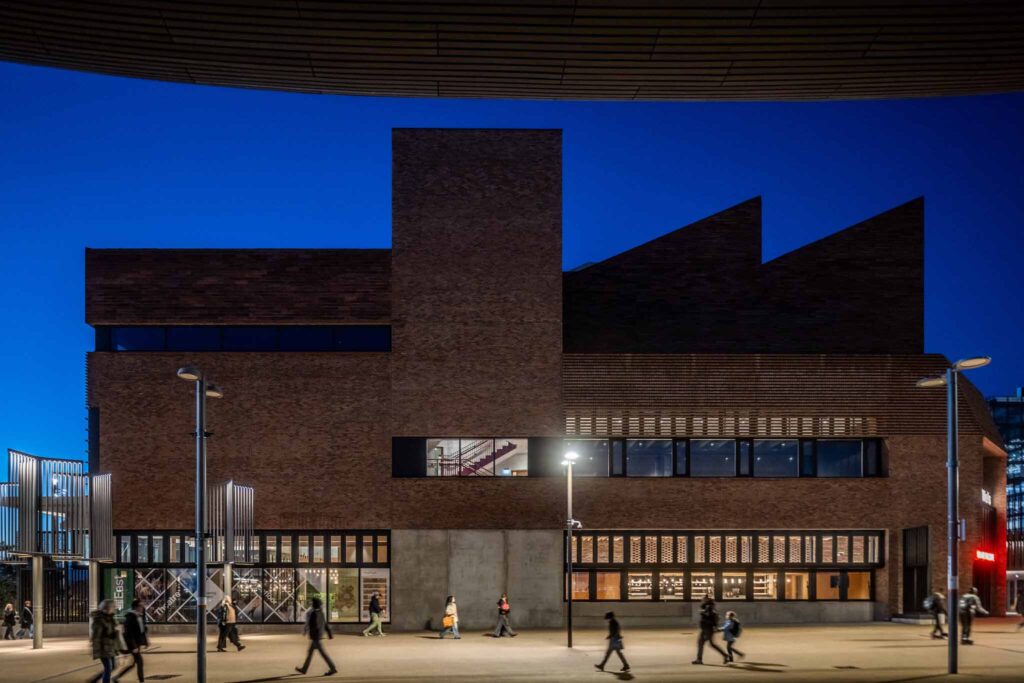
A Cultural Renaissance with Global Appeal
East London is buzzing with new cultural institutions. The East Bank development at Queen Elizabeth Olympic Park will unveil the Sadler’s Wells East theater in February and the V&A East Storehouse in May, showcasing treasures like Mughal architecture and haute couture. In September, the David Bowie Centre will open, followed by the SXSW London festival, marking the event’s European debut.
36. Stockholm Archipelago, Sweden
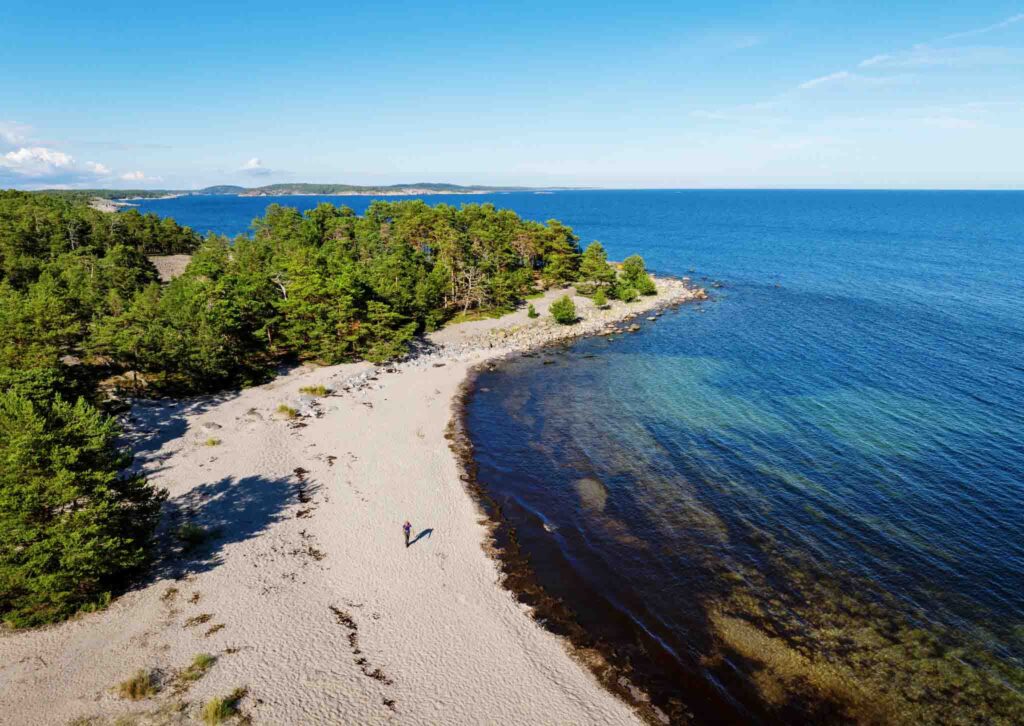
A New Trail Highlights Rugged Beauty
The Stockholm Archipelago Trail, opened last fall, offers over 160 miles of marked paths across 21 islands in this vast region of rocky coves, pine forests, and tranquil bays. Funded by the Swedish Environmental Protection Agency, the trail encourages sustainable tourism and protects fragile ecosystems, with easy access via ferries and public transit.
37. Kutaisi, Georgia
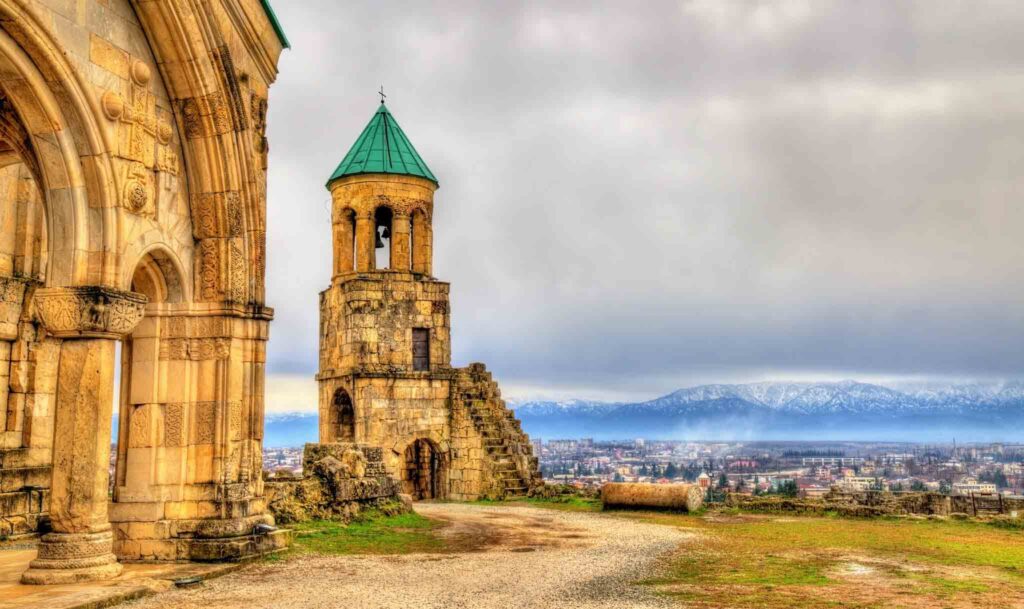
A Historic City with Modern Allure
Kutaisi, one of the world’s oldest cities, is gaining attention thanks to budget flights and new attractions. A digital museum opening this year highlights its 3,500-year history, while cultural centers celebrate Georgian music and dance. The city serves as a gateway to the Caucasus Mountains, Black Sea coast, and ancient sites but also shines with its own vibrant bazaars, cafes, and historic churches.
38. Osaka, Japan
Green Spaces and Progressive Milestones
Osaka is transforming with the Grand Green Osaka project, creating new parks and lifestyle hubs. This year, the city will open Japan’s first Waldorf Astoria, host the World Expo, and continue its reputation as Japan’s most progressive city with landmarks like the Pride Center and successful international LGBTQ+ events.
39. Detroit, Michigan

Urban Revival Along the Detroit River
Detroit’s renaissance continues with the opening of the Gordie Howe International Bridge, connecting the U.S. and Canada. The revitalized Ralph C. Wilson Jr. Centennial Park and the transformed Michigan Central Station, now a tech hub, highlight the city’s progress. Public art commemorates the Underground Railroad, celebrating Detroit’s rich history.
40. Trent-Severn Waterway, Ontario
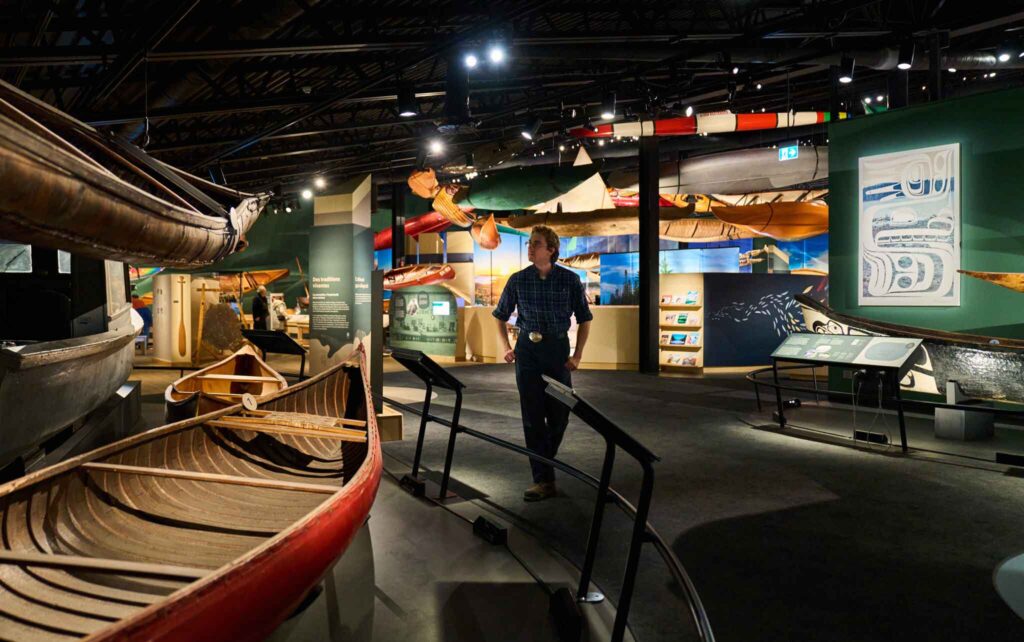
A Scenic Voyage Through Canadian History
Ontario’s Trent-Severn Waterway is enjoying renewed interest, with the opening of the Canadian Canoe Museum, showcasing the country’s rich paddling history. Visitors can explore retrofitted hydraulic lift locks, rent boats from Le Boat, and enjoy culinary routes featuring butter tarts and BeaverTails, all while floating through this historic water system.
41. Montserrat, Spain
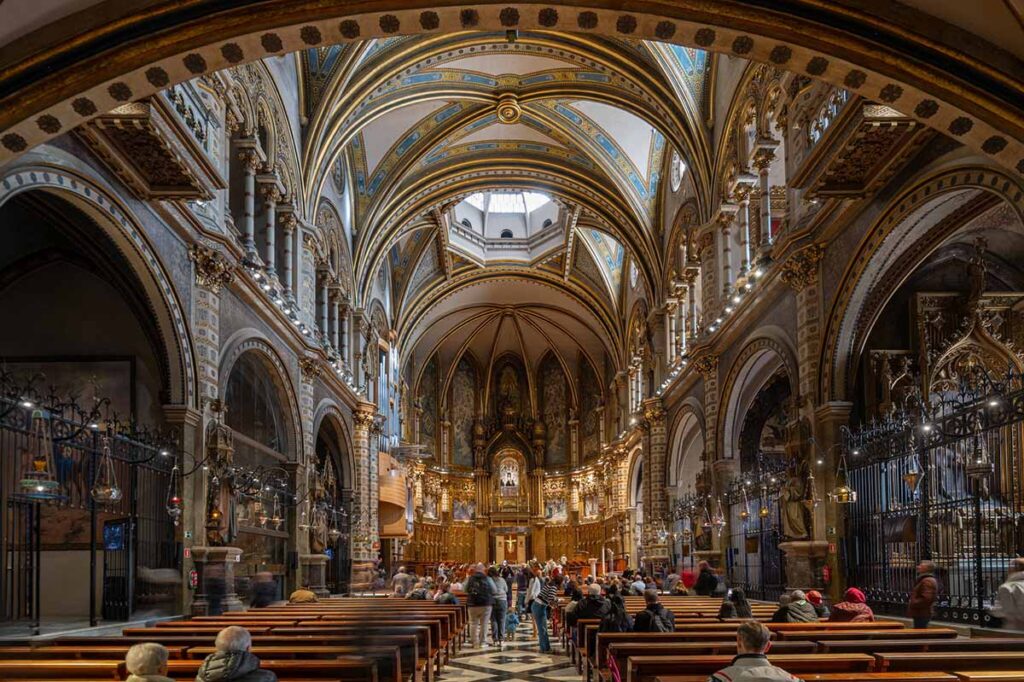
A Sacred Catalan Retreat Marks 1,000 Years
The jagged peaks of Montserrat, located an hour from Barcelona, have long drawn pilgrims to its Benedictine monastery and the revered Virgin of Montserrat shrine. This year, the site celebrates its 1,000th anniversary with a music festival, performances by the Escolania boys’ choir, and an exhibition chronicling the monastery’s history. The celebration coincides with a Roman Catholic Jubilee year, adding spiritual significance. Surrounded by the Montserrat Natural Park, visitors can hike trails leading to abandoned hermitages and climb to Sant Jeroni, the highest peak, for breathtaking views.
42. Western Australia
Epic Road Trips Made Easier with E.V. Charging Stations
Australia’s longest electric vehicle highway will debut this year, connecting 110 fast-charging stations across 4,350 miles of scenic routes. The nearly 800-mile Coral Coast Highway offers adventures like the Kalbarri Skywalk and whale shark swims, while the South West Edge route highlights attractions like the Valley of the Giants Tree Top Walk, wildflower fields, and Esperance’s pristine beaches. Eco-friendly travel meets Western Australia’s stunning landscapes.
43. Washington, D.C.
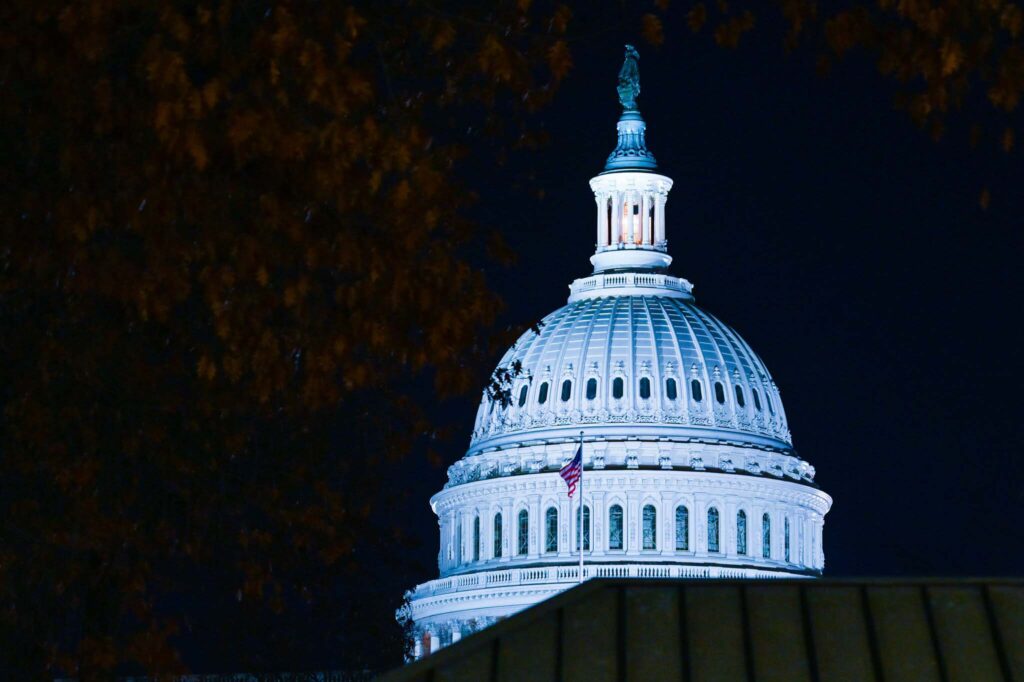
A Historic WorldPride Celebration and New Panda Stars
Washington, D.C., marks 50 years of Pride with the WorldPride event, themed “The Fabric of Freedom.” Highlights include the DC Black Pride festival, a Shakira concert, and a parade near the White House, culminating with a rally at the U.S. Capitol. Visitors can also meet two new pandas, Bao Li and Qing Bao, making their debut at the National Zoo.
44. Nangma Valley, Pakistan
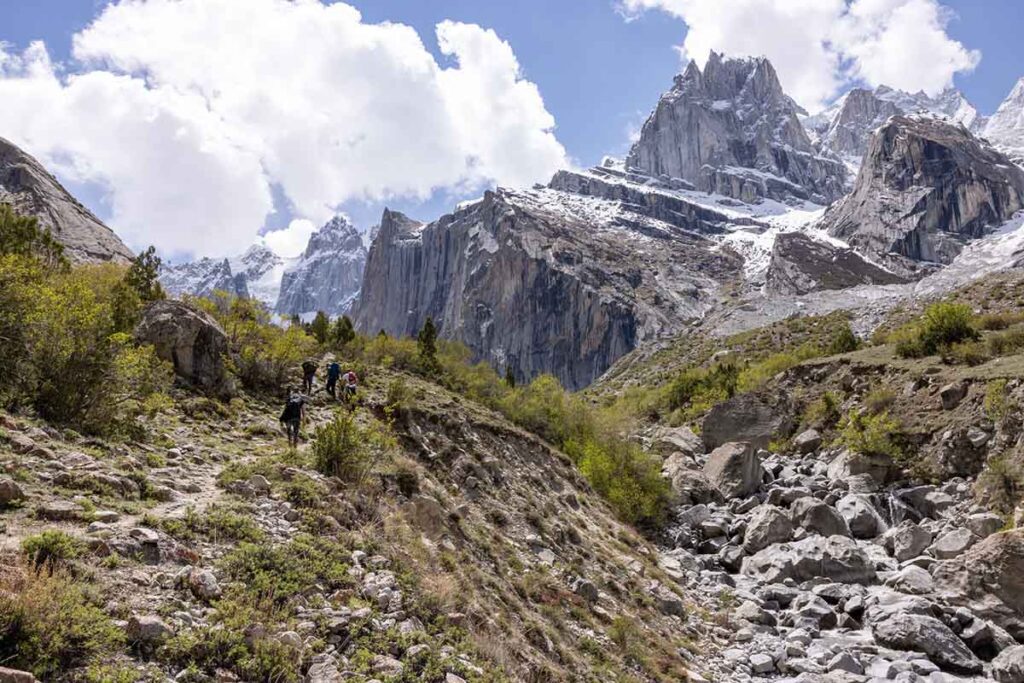
Explore a Hidden Gem in the Karakoram Range
The Nangma Valley, known as Pakistan’s Yosemite, offers a lush valley floor framed by towering granite peaks. Thanks to new trekking routes and guided tours launched by local outfitters, the valley is becoming more accessible. Weekly summer flights from Dubai and free electronic visas for over 120 countries make it easier for international visitors to experience this unspoiled destination.
45. Sicily Divide Cycle Route
Discover Sicily’s Heart by Bike
The Sicily Divide is a 285-mile cycling route spanning the island from Trapani to Catania near Mount Etna. Developed to boost sustainable travel, the trail winds through intimate villages, vineyards, and stunning landscapes, offering an authentic view of Sicily beyond its beaches. Cyclists will find a warm welcome in small communities revitalized by this unique journey.
46. Ollantaytambo, Peru
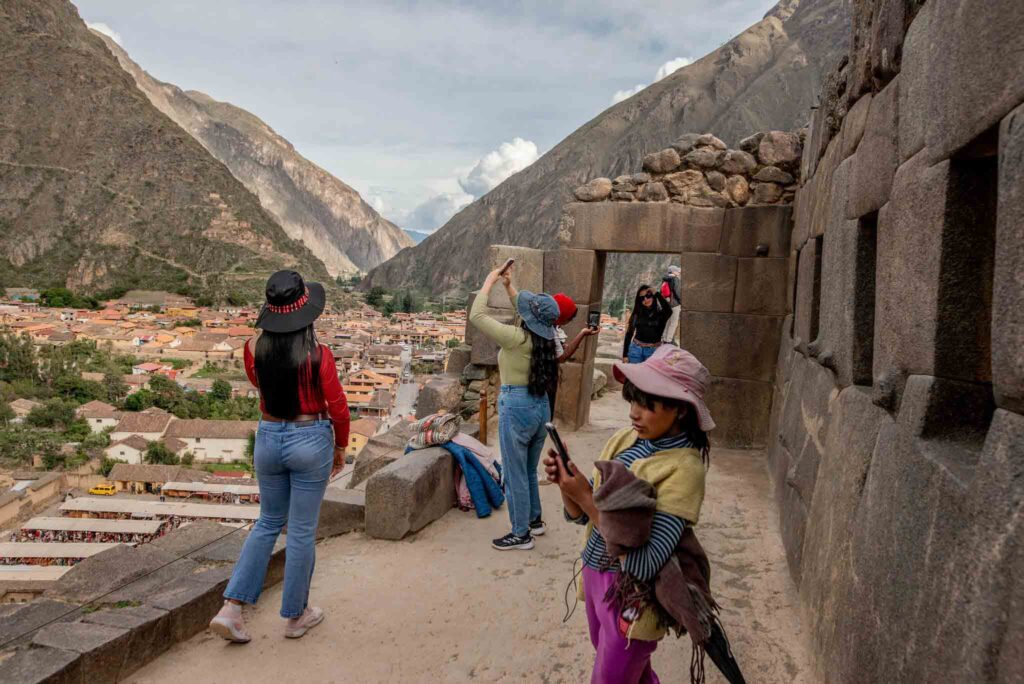
An Inca Gem Without the Crowds
The enchanting town of Ollantaytambo, nestled in Peru’s Sacred Valley, offers a less-crowded alternative to Machu Picchu. Visitors can explore ancient Inca ruins, vibrant markets, and cobblestone streets, or hike to nearby waterfalls and quarries. At 9,100 feet, the town provides both history and breathtaking natural beauty.
47. Abu Dhabi, U.A.E.

A Cultural Renaissance Meets Coastal Adventures
Abu Dhabi’s Saadiyat Cultural District is expanding with the openings of the Zayed National Museum, the Guggenheim Abu Dhabi, and a natural history museum. The city’s Hudayriyat Island now features the world’s largest surf park, eco-farming spaces, and nearly 10 miles of beaches. Sustainable innovations include electric taxi planes connecting Abu Dhabi to Dubai in just 30 minutes.
48. Huangshan, China
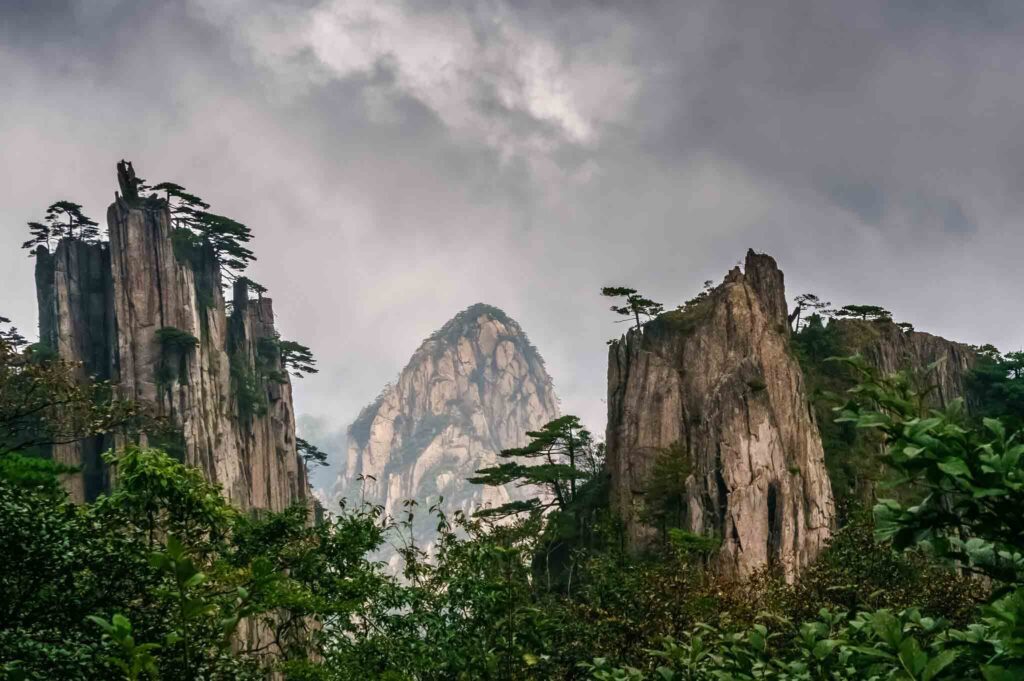
High-Speed Access to a UNESCO Mountain Wonderland
Huangshan, known for its dramatic peaks and ancient pine forests, is now more accessible via a bullet train from Shanghai, cutting travel time to just 2.5 hours. With well-maintained trails, cable cars, and a visa-free transit program for travelers from 50+ countries, Huangshan offers a seamless blend of natural beauty and modern convenience.
49. Milan, Italy

Art and Design Flourish Ahead of the Winter Olympics
As Milan prepares for the 2026 Winter Olympics, cultural highlights include the Grande Brera art complex and the new Casa Brera hotel, known for its rooftop bar and Michelin-starred dining. Design Week (April 7–13) will explore “Connected Worlds,” while exhibitions like “Picasso the Foreigner” and “Tim Burton’s Labyrinth” add to the city’s creative energy.
50. Bulgaria
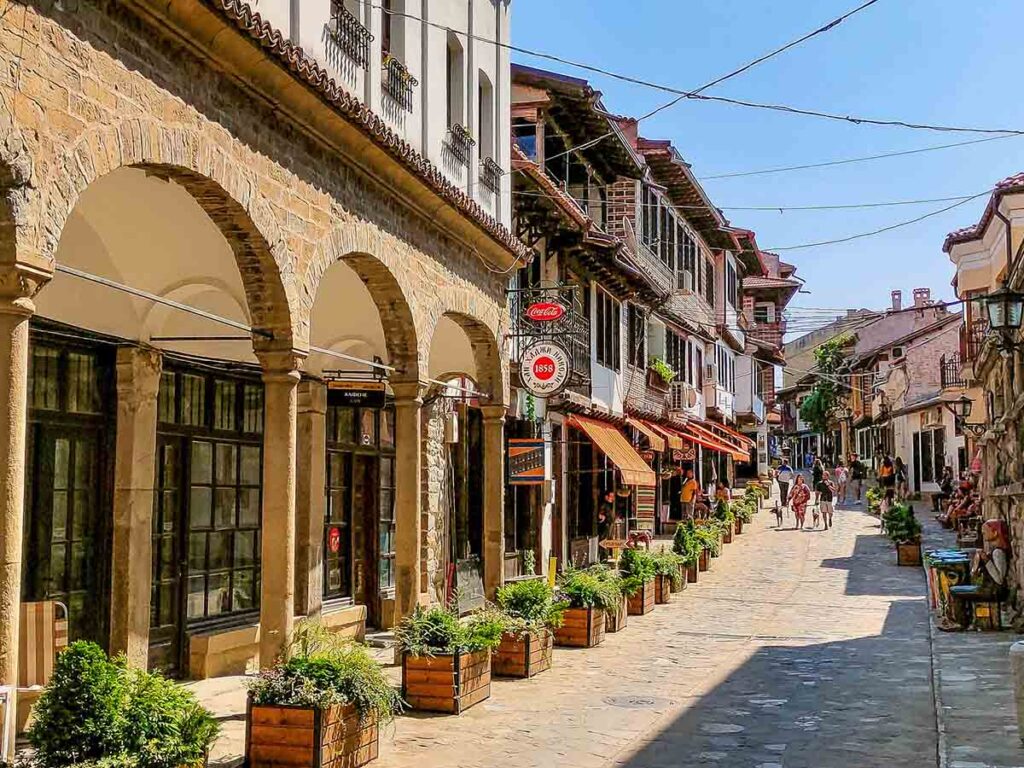
Easier Travel to a Land of Natural and Cultural Wonders
With border checks removed for most EU visitors and plans to adopt the euro, Bulgaria is becoming more accessible. Explore Sofia’s Triangle of Religious Tolerance, hike in Rila National Park, visit the Rila Monastery, or enjoy nightlife in Plovdiv. The country’s underrated wines and Black Sea resorts add to its charm.
51. Rotterdam, Netherlands

A Port City Becomes a Cultural Capital
Rotterdam, known for its modern architecture, is transforming into a cultural hub. The waterfront Katendrecht neighborhood will welcome the Fenix Museum of migration and the relocated National Museum of Photography. The city’s creative energy and rich history offer visitors a dynamic alternative to nearby Amsterdam.
52. Montserrat, Caribbean
Resilience and Renewal on a Volcanic Island
Montserrat marks 30 years since volcanic eruptions displaced much of its population with the opening of a $27 million seaport, improving access to its lush northern region. Visitors can hike green hills, birdwatch for the Montserrat oriole, and explore the island’s cultural legacy, including its African Irish heritage and vibrant music history.
A pioneering genetic study revealed that the Galapagos Archipelago giant tortoises were in fact 13 genetically different species. This discovery, supported by Galapagos Conservation marks an important milestone in understanding the unique biodiversity of the archipelago and highlights the importance of updated taxonomic data to guide tortoise conservancy.
Genetic Breakthroughs shed new light
Researchers at Yale University used advanced genetic sequencing technology to identify clear genetic differences between tortoise population across the Galapagos islands. Researchers used techniques like whole-genome analyses and single nucleotide Polymorphisms to reveal a much higher level of genetic variation than was previously known. These findings highlight the importance of revising earlier taxonomic model, which treated tortoises on different islands as one species.
Taxonomy: A paradigm shift
This discovery challenges IUCN Tortoise taxonomy working group’s one-species approach adopted in 2021. The study shows that Galapagos tortoises are 13 different genetic lineages. This disproves the idea of a shared, recent evolutionary origin. The unique environmental conditions on each island and the geographic isolation have caused these populations to adapt in a different way, leading to the emergence separate species.
The differences between tortoises from most islands are so significant that they warrant a reclassification as separate species. This new perspective provides a more refined understanding of the biodiversity in the archipelago, which is renowned for its extraordinary speciation due to adaptations to isolated environments.
Galapagos Conservancy’s role in research and conservation
Galapagos Conservancy was instrumental in this breakthrough, by supporting cutting-edge scientific research. We work in collaboration with the Galapagos Park Directorate to protect these species by implementing targeted conservation programs. We have a strong commitment to research, which has enabled us to access critical resources and allow international teams of scientists to conduct genetic studies such as this. We also lead efforts in monitoring and protecting tortoise populations against threats like poaching, invasive sytems, and habitat destruction.
Conservation Strategies Adapted for Genetic Diversity
The conservation of tortoises is likely to be greatly affected by this new understanding. The majority of tortoise species are distinct enough that they require their own conservation strategies. These efforts include preserving specific habitats, and managing population interactions carefully to avoid unintentional cross-breeding.
These findings emphasize the need for modernizing conservation methods, and aligning them with the unique genetic features of each population. Galapagos Conservancy, which combines cutting-edge research with targeted conservation programs in order to protect endangered species, is leading this crucial shift.
Global Collaboration for the Future of Giant Tortoises
Genetic data and analyses from the study were made available to scientists around the world, encouraging collaboration and research. The findings of this study will be a long-lasting impact on the conservation efforts for Galapagos giant turtles.
The confirmation of thirteen distinct species is a major achievement in science and conservation.
Galapagos Conservancy is committed to the protection of these species. We strive to preserve the natural heritage of Galapagos through innovative research, community support and collaborative efforts.
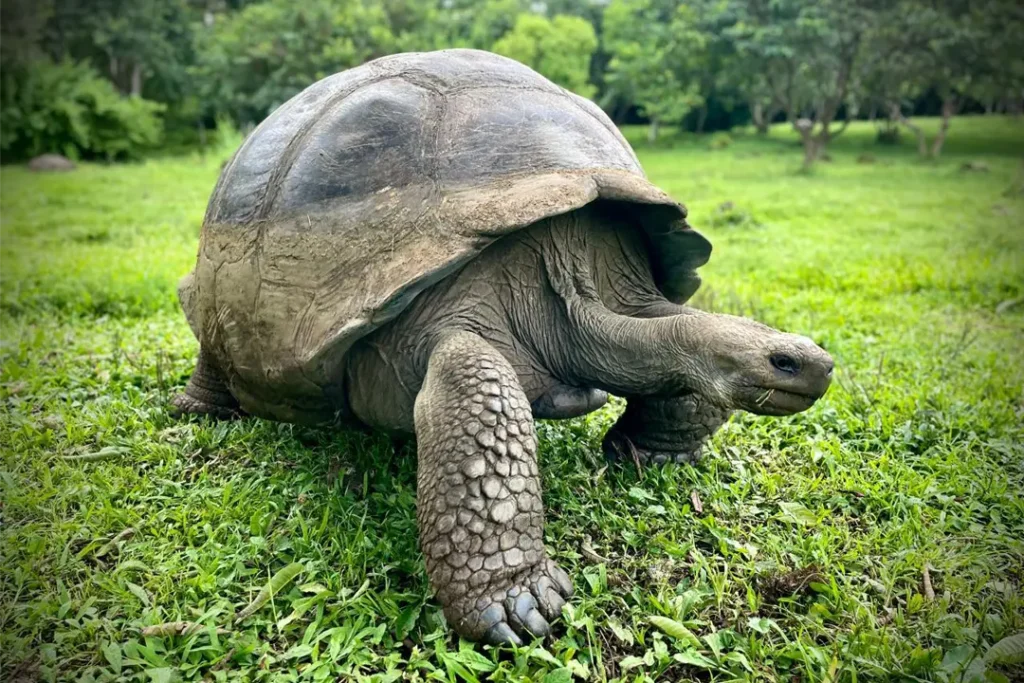
The Galapagos petrel ( Pterodroma Phaeopygia ) struggles to survive in the harsh terrain of Santiago Island. This seabird, which is unique to the archipelago and genetically different on each island it nests on, is a sensitive indicator for changes in the marine environment, where it feeds, and the terrestrial environment, where it nests. The fragility of the nesting habitat and invasive predators are two major threats to the species.
In the 1970s, Santiago Island was home to approximately 11,250 nesting pairs of Galapagos Petrels. In 1985, the number of nesting pairs had dropped to less than 500. The current population is still at risk but the progress made in conservation and monitoring efforts provides valuable insight into the species needs. Galapagos Conservancy is proud to be leading initiatives to address invasive species, the greatest threat to petrels’ reproductive success, through science-based strategies and on-the-ground action.
Progress Toward Recovery for 2024 Expeditions
Two expeditions were conducted in 2024–one in October and one in July–to assess breeding success and threats to the Galapagos petrel on Santiago Island. A team of researchers and park rangers from the Galapagos Conservancy battled remote terrains in order to monitor historic nesting colonies.
Monitor nests and combat threats
The July expedition collected critical data despite adverse weather conditions. The use of acoustic monitoring helped to determine where the nests are located on the island. Of the 340 nests found in these areas, 49 juveniles flew successfully to their aggregation zone at sea after flinging 88 chicks. The team collected genetic samples and banded adults and juveniles to better understand the biology of this species.
Predators remain a threat. Four eggs, 21 chicks and six juveniles were found to have been preyed upon by rats and fireants, which highlights the pressure that invasive species continue to exert on the petrel.
Invasive Species Control and the Reproductive Success
During the mission, rat bait was placed in 166 strategic areas, and almost 700 fire ant colony were treated to reduce predator pressure. The effort produced positive results. Of the 340 nests examined, almost a third of them produced juveniles who successfully fledged. This shows the effectiveness of conservation measures, especially the intensive control over invasive predators such as rats and fireants. The team advanced habitat characterization, which laid a solid foundation to continue monitoring and conservation.
Building Infrastructure and Commitment
Santiago Island is a challenging place, both in terms of its isolation and the threat posed by invasive species. Galapagos Conservancy has been actively working to improve the infrastructure of the area, including renovating the La Central Field Station, in order to enhance logistics operations in this remote location.
Dr. Director of Conservation at Galapagos Conservancy, Jorge Carrion, said, “Strengthening the infrastructure on Santiago Island will be essential to our joint operations with Galapagos National Park Directorate.” This will enhance the efficiency of conservation missions, and demonstrate our commitment to the Galapagos Petrel.
The Galapagos Petrel: A Future with Hope
The 2024 Expeditions did not only advance the recovery of an iconic species, but also demonstrated the importance of collaboration between Galapagos Conservancy and the Galapagos National Park Directorate. We are creating a better future for the Galapagos Petrel through science-driven action and careful planning.
As we move forward, our focus will be on eliminating invasive species, improving infrastructure and increasing monitoring in key nesting areas. Each nest protected and every threat mitigated brings us closer towards securing the Galapagos Petrel’s future and preserving its natural wonders.
The Galapagos Petrel on Santiago Island is enjoying a better future through a combination of science-led initiatives and collaborative actions.
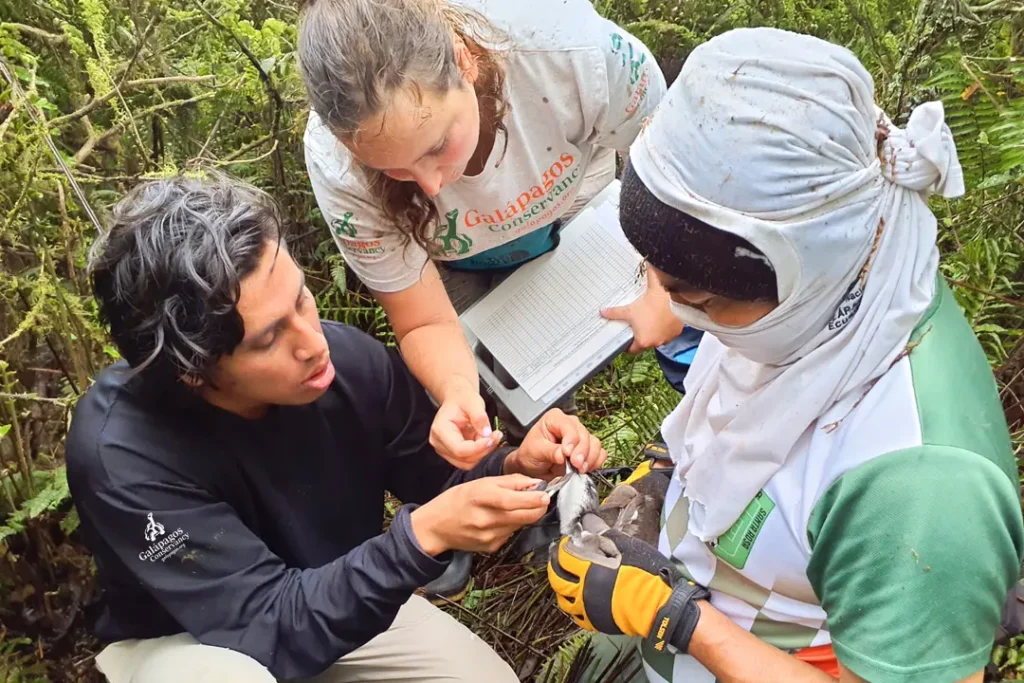
©Galápagos Conservancy
The Galapagos giant turtle’s recovery is a great example of how scientific insights can be used to create innovative conservation. In 1965, captive rearing programs were established for giant tortoises. These programs have been crucial to the recovery of several tortoise species. The programs are designed to raise tortoises safely during the first five years of their lives, when they’re most vulnerable to predators, food shortages and water scarcity. It would not have been possible to bring giant tortoises back from the brink without the dedication of those who work behind the scenes. Galapagos Conservancy works with Galapagos National Park Directorate in order to run breeding centres.
Walter Chimborazo’s Dedication
Our experts can make a difference. Walter Chimborazo, is one of these experts. Walter Chimborazo is a friendly and familiar face at the Fausto Llerena Breeding Center in Santa Cruz Island. He works with park rangers there to ensure the well-being and safety of thousands of young tortoises.
Walter’s dedication is evident in his days: he distributes greens every Monday, Friday, and Wednesday to the tortoises. Walter cleans the corrals of the tortoises on other days and makes sure they get enough sun to maintain a healthy body temperature and growth. Walter is on call seven days a weeks during nesting season to adjust the temperature in incubators to optimize development. Walter is the Godfather to thousands of these gentle giants. The most rewarding part for him is watching them grow.
Cristian Gil: A Passionate Trip to Galapagos
Cristian’s commitment is evident at the Arnaldo Tupiza breeding center on Isabela Island. The center was established in 1995 and serves as a sanctuary for the threatened tortoises of the island. Galapagos Conservancy funded recent upgrades at the center. These include breeding pens and improved enclosures. The upgrades improve the lives of the tortoises while allowing the staff to provide better and less disruptive care. They also demonstrate their renewed commitment towards the tortoises.
The story of Cristian l, another of our turtle experts is equally inspiring. He was raised on Isabela Island on the flanks the Sierra Negra volcano, where he witnessed the dramatic decline of the giant tortoises. Cristian’s passion for protecting his native land led him to study environmental science, and then join the team at Galapagos Conservancy.
Collaboration for a Sustainable Future
This successful collaboration with Galapagos National Park Directorate has enabled us to add a human touch to our breeding centers. Walter’s commitment to Santa Cruz, and Cristian’s to Isabela are just two examples. We can continue this success story through continued collaboration, dedication and innovation on the grounds. The power of collaboration is what makes all this possible.
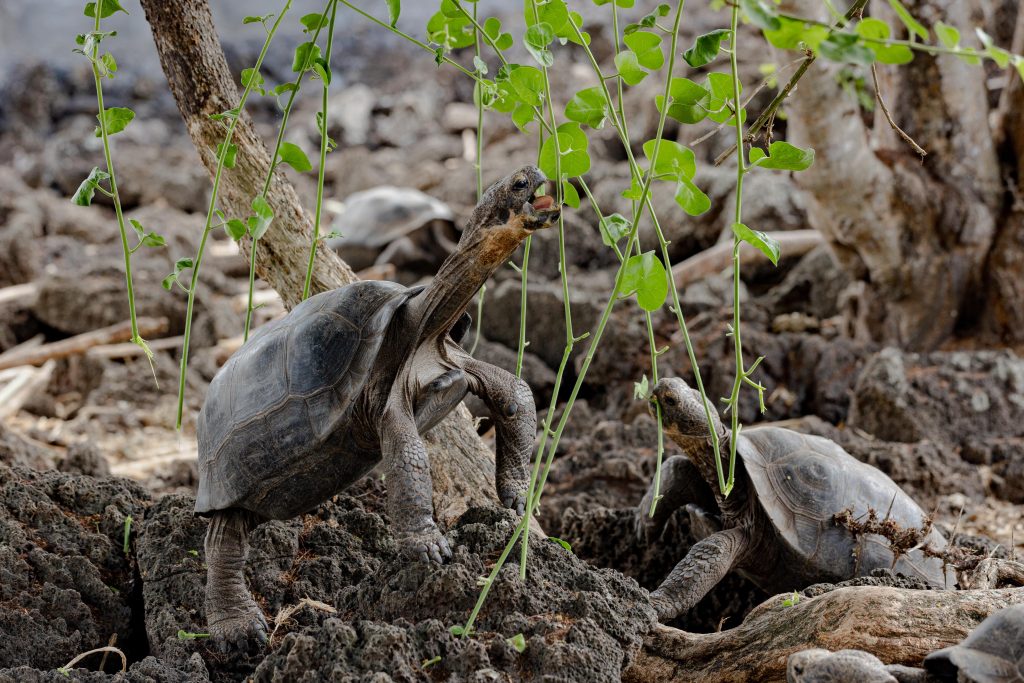
©Galápagos Conservancy
Galapagos Conservancy proudly supports the conservation efforts of Galapagos National Park Directorate. This includes the Project for Resilient Corals in the Central-South Bioregion, Galapagos Marine Reserve. This initiative is designed to protect coral reefs, one of the most fragile ecosystems within the reserve. These reefs are vital to the health of marine life and are a great attraction for both scientists and tourists.
Coral Resilience: a Positive Outlook
The hard work of park rangers has made significant progress this year. In the Central-South Bioregion, you will find sites like Santiago, Floreana and Espanola that were once famous for their vibrant corals reefs. Climate change and other factors have had a severe impact on these ecosystems.
Corals that remain in these areas tell not only the story of Galapagos, but also offer important insights on resilience and adaptability in the face adversity. Corals are vital to marine ecosystems. They’re often called “the lungs” of the ocean. Corals provide habitat for many species and form natural barriers to protect coastal areas against erosion.
Scientists continue to monitor the reefs and have found that certain coral species are resilient. Certain corals adapt and find ways to thrive and survive despite stressors like rising water temperatures. This adaptation is vital for their survival, and provides valuable lessons about how ecosystems can cope with future challenges.
Coral Health Monitoring and Improvement
The project’s main objective is to evaluate the health of coral fragments from the islands of Santa Cruz, Floreana and Espanola. We have updated our map of coral fragments in the reserve thanks to fieldwork and research expeditions. These fragments of coral are carefully being cultivated at the nursery in Bahia Academia in Puerto Ayora in “beds” made from ropes and mesh to protect them against harmful light and environmental factors.
Corals are resilient despite facing many challenges. Monitoring has shown that since June 2024 there has been an increase in the presence of algae, which negatively impacts the health and survival of corals. This has caused a 20% mortality rate for branching corals as well as a 30% death rate in older nursery fragments. Massive corals, however, have been able to withstand bleaching. It is important to control the growth of Ulva, a type of green alga, and red filamentous bacteria.
Community Engagement and Collaboration
This project would not have been possible without the participation of local volunteers. The community, especially young people, has shown a strong commitment in supporting coral reef cleaning and monitoring activities. Their participation not only helps maintain these ecosystems, but also inspires future generations to become environmental advocates.
Look to the Future
Our project also aims to identify the coral species that are most resistant. We are collecting data about how coral colonies react to temperature changes, which is important for the conservation and global restoration strategies of Galapagos Corals.
We organized a coral-cleaning event recently at the Bahia Academia Coral Nursery, where we care for 185 fragments of coral from eight different species. This is important because the growth of algae tends to be more pronounced during colder months. We provide space in the nursery for corals to grow and then transplant them to areas of the ocean that require restoration.
This collaboration with Galapagos National Park Directorate will be vital to restoring biodiversity and protecting Galapagos’ unique marine treasures. We remain committed to conservation efforts to preserve the rich marine life of the Galapagos.
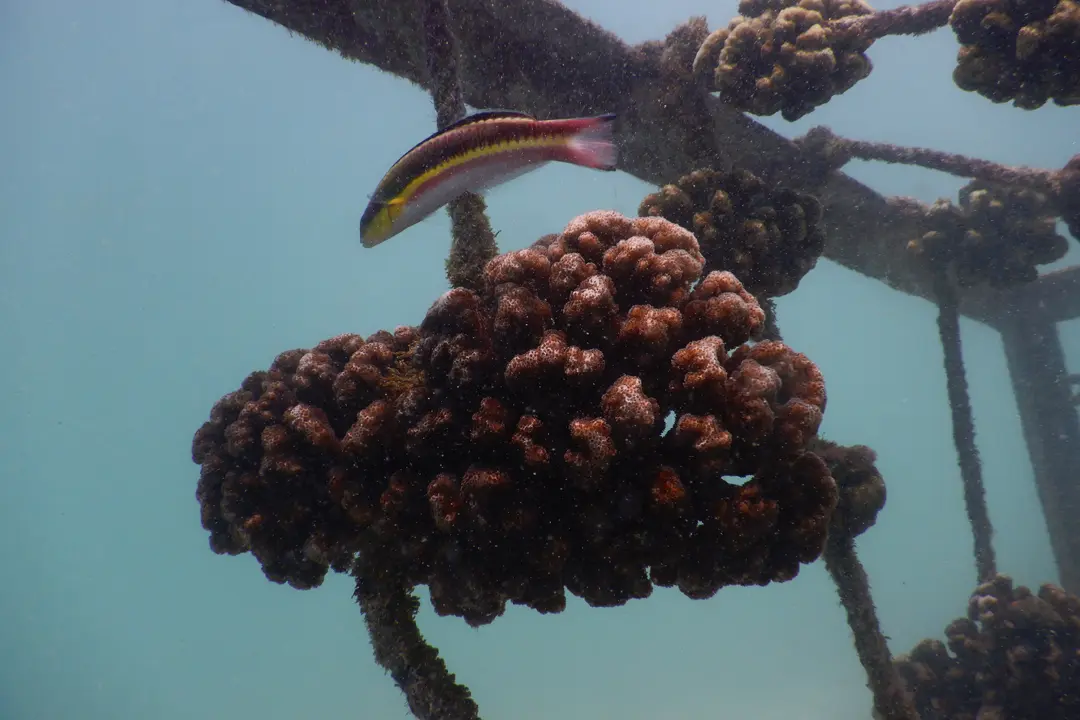
©GNPD
The “Galapagos My Responsibility” project is supported by Galapagos Conservation and conservation grant. It sets a new standard in environmental education for children and youths on Santa Cruz Island. This initiative, led by Alberto Andrade – an environmentalist and grant recipient – implements a number of activities to educate and motivate the community in order to protect the Galapagos ecosystem. The project encourages active participation to cultivate a deep and lasting awareness of the environment, which empowers the next generation in taking leadership roles for conserving this amazing archipelago.
Radio: Increasing Environmental Awareness
In collaboration with Radio Santa Cruz the project conducted 21 radio broadcasts, reaching hundreds listeners. The broadcasts addressed important conservation issues such as species protection and sustainability tourism. The broadcasts created a platform for dialogue with 44 local participants. The series is a powerful tool to promote environmental responsibility. It engages a large and enthusiastic audience that wants to take action.
Workshops and Conversations – Elevating Young voices
With our support, we have facilitated storytelling workshops where children and young adults developed their communication skills so that they could express their ideas and feelings confidently. The workshops helped participants overcome stage fright and also instilled a sense environmental leadership. They prepared the Galapagos youth to play an active role in conservation efforts.
We also hosted live-streamed social media discussions that covered important topics like conservation, science and regenerative travel. These conversations gave the community a forum to discuss solutions to environmental challenges, while strengthening collective efforts to preserve Galapagos unique biodiversity.
A Project with a Vision for the Future
The activities of “Galapagos, My Responsibility”, thanks to the collaboration with community partners, will continue to grow. Radio programs and workshops that are currently being conducted will reach an even wider audience. This will encourage more people to join the mission of protecting Galapagos’ fragile ecosystems.
We are proud to support initiatives that promote environmental awareness, and foster youth leadership. We encourage community participation to conserve the natural heritage of this archipelago through our commitment. Galapagos, My Responsibility is a project that not only protects the biodiversity of Galapagos, but also leaves a legacy of environmental awareness and responsibility for future generations.
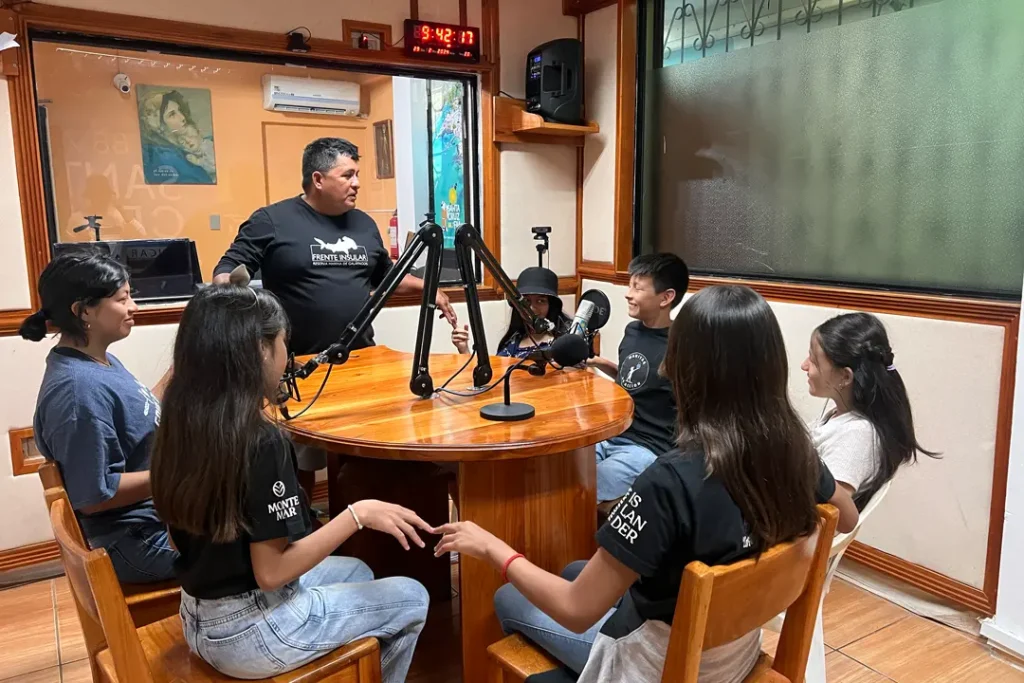
©Galápagos Conservancy